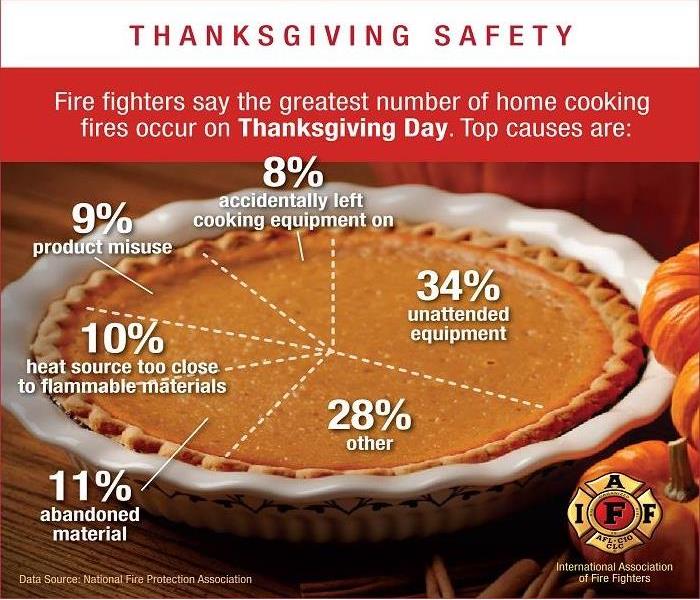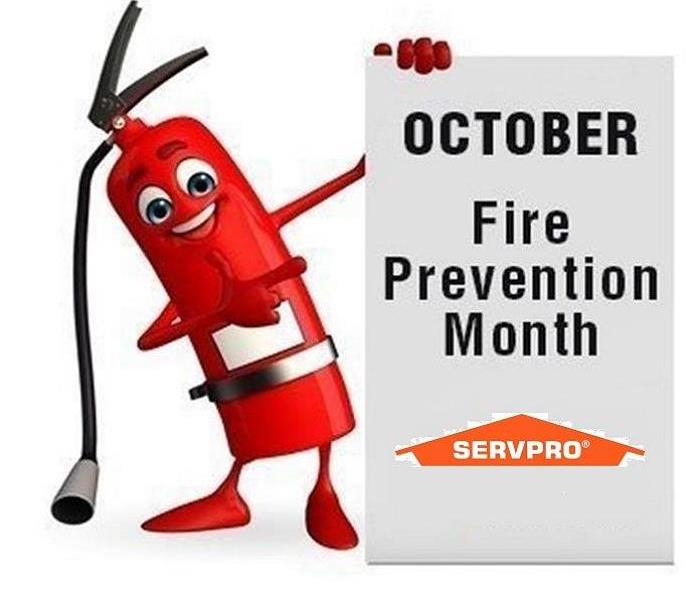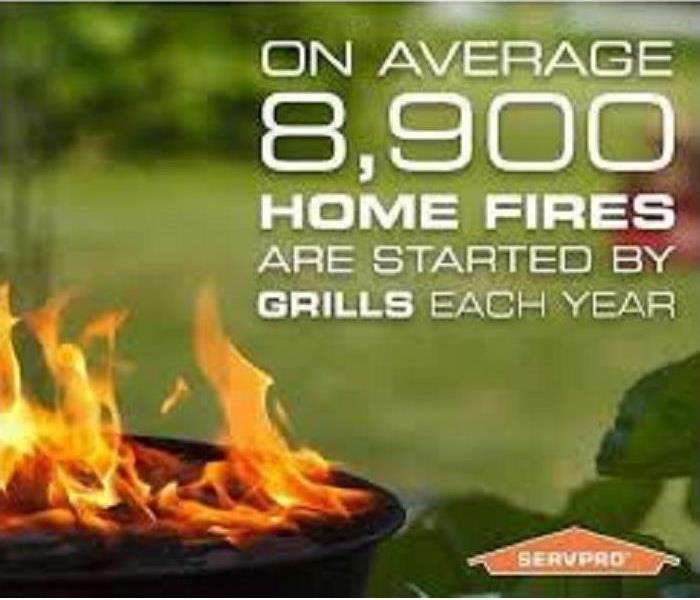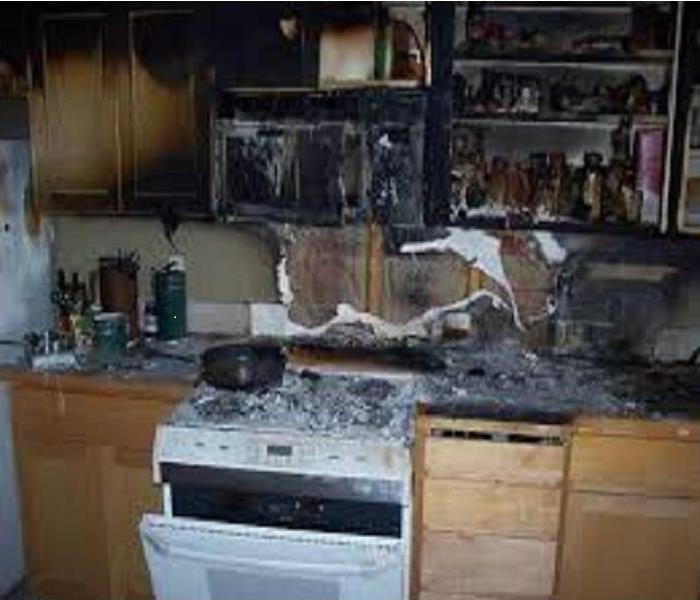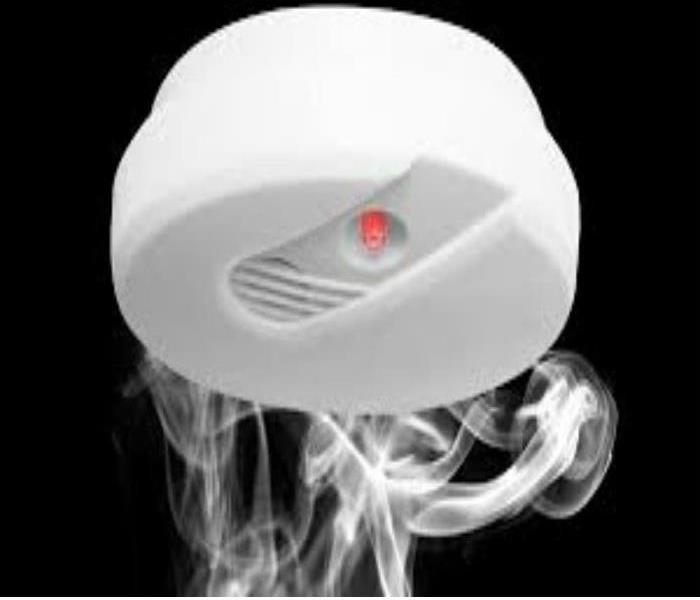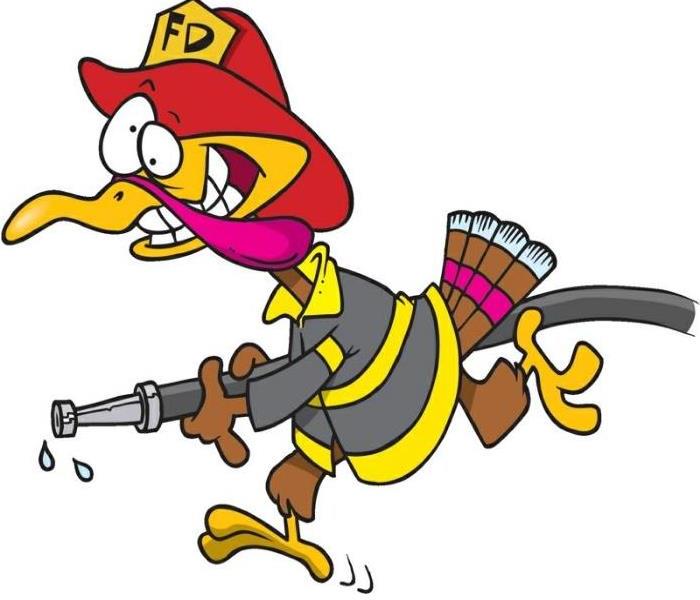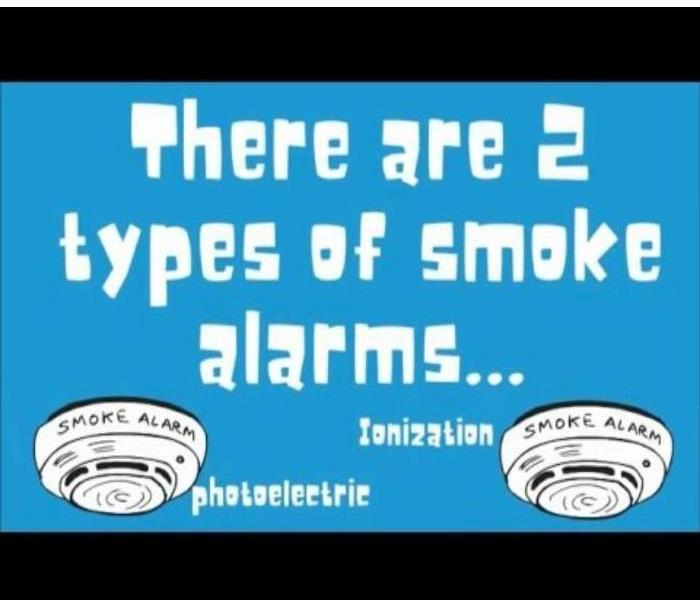Recent Fire Damage Posts
Navigating Insurance After a Fire: SERVPRO’s Guide to Success
6/3/2024 (Permalink)
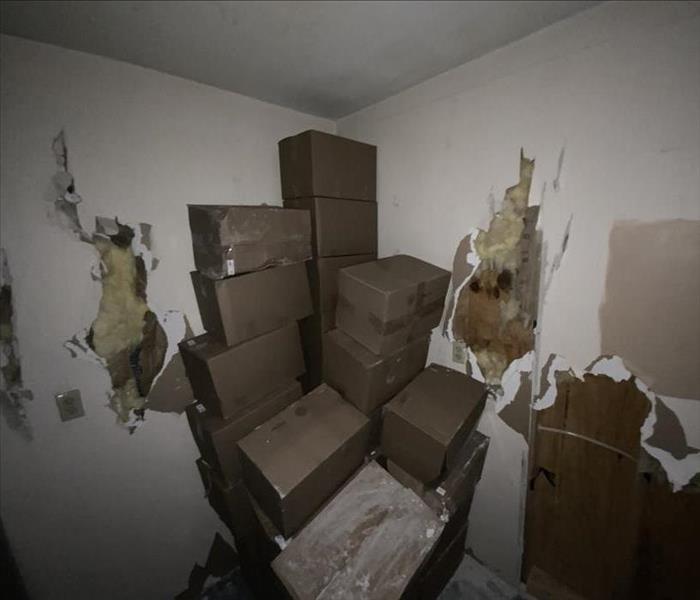 SERVPRO is experienced in working with insurance companies and can help you navigate the claims process.
SERVPRO is experienced in working with insurance companies and can help you navigate the claims process.
Dealing with insurance companies following a fire loss can be daunting, but with the right approach and support, the process can be manageable. Here are some best practices and how SERVPRO® can assist you every step of the way:
Understanding Insurance Claims After a Fire
Document Everything: Keep detailed records of all communications, receipts, and documentation related to your fire loss. This includes photographs of the damage and any temporary repairs made.
Review Your Policy: Familiarize yourself with your insurance policy, including coverage limits, deductibles, and exclusions. Understanding your policy will help you navigate the claims process more effectively.
Communicate Promptly: Notify your insurance company of the fire loss as soon as possible. Prompt communication is essential for initiating the claims process and expediting your claim.
How SERVPRO Can Help
Insurance Liaison: SERVPRO can act as a liaison between you and your insurance company, facilitating communication and ensuring that all necessary information is provided promptly.
Accurate Documentation: Our technicians meticulously document the extent of the fire damage, providing detailed reports and photographs that can be submitted to your insurance adjuster to support your claim.
Streamlined Process: With our expertise in fire damage restoration, we can streamline the restoration process, minimizing downtime and helping you get back to normalcy as soon as possible.
Assistance with Claims: SERVPRO is experienced in working with insurance companies and can help you navigate the claims process, ensuring that you receive the coverage you are entitled to.
Conclusion
Navigating insurance companies after a fire loss requires patience, diligence, and expertise. With SERVPRO by your side, you can rest assured that you have a trusted partner to guide you through the process and help you achieve a successful recovery.
For more information and assistance with fire damage restoration and insurance claims, contact SERVPRO today. We’re Here to Help!
Five Focuses on Lynn Fire Damage Restoration
8/5/2022 (Permalink)
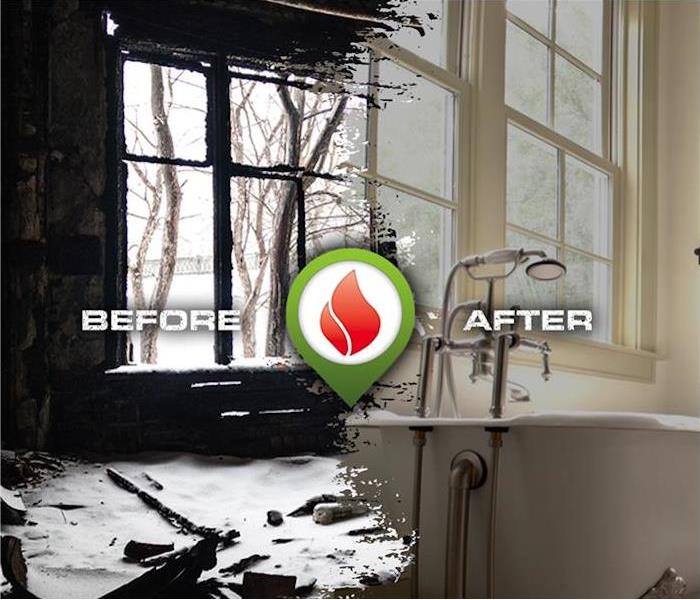 SERVPRO's goal is to restore your fire damaged Lynn home to its pre-damaged condition, "Like it never even happened."
SERVPRO's goal is to restore your fire damaged Lynn home to its pre-damaged condition, "Like it never even happened."
Fire Damage Recovery Happens in Set Stages
Despite variables like the type of material affected and the size of the damaged areas, fire recovery is similar from one instance to another. Understanding the objectives and focal point of the responding team keeps homeowners more at ease with each phase and its expected timelines. From the time we are first notified of a disaster, we can move quickly to help in these five main areas:
- Emergency Services
- Mitigation
- Soot Removal and Cleaning
- Deodorization
- Repairs and Reconstruction
It is crucial after Lynn fire damage to get professionals on-site as fast as possible. Any disaster continues to worsen after exposure. We have stocked trailers and production vehicles at our facility to help throughout the Greater Lynn area, so we can enter a building as soon as possible after first responders have deemed it safe to do so.
Early Emergency Services
Because it is important to act fast with mitigation solutions, we arrive quickly to implement specific actions that can help. Often, these processes precede focused inspections and any insurance repair work. This phase of our recovery combines the knowledge of our restoration experts and the experience of our contractors. The union becomes a series of actions to improve later recovery times through efforts like:
- Temporary Construction
- Debris Removal
- Water Removal
Mitigating Loss After Fire Damage
Mitigation is among the critical elements of restoration and recovery. These are the earlier actions that our professionals can take to begin fact-finding about the damage for insurance claims purposes and removing glaring issues that could make the restoration process unsafe for our team or slower to complete. Some of these focal points include:
- Content Relocation
- Air Quality Improvement
- Controlled Demolition
Removing Soot Damage
One of the more formidable obstacles to removing fire and smoke damage effects from the property is eliminating soot residues on the surfaces. Partial combustion thrusts soot particles through the air, many of which rest on horizontal surfaces. Depending on the damage condition, from wet and dry smoke to furnace puff backs, the strategy of surface cleaning changes. We rely on alkaline cleaners, solvents, detergents, and other products to clear the outermost layers of affected items from soot. More aggressive measures like media blasting are also needed when the damage extends beyond the surface.
Addressing Fire Damage Malodors
Another one of the primary objectives of complete fire restoration and recovery is the removal and neutralization of malodors in the house. Not only must our professionals manage overwhelming open-air smells, but they must also deal with trapped scents in porous materials and imaginary odors (phantosmia.) Each of these requires a unique strategy, but SERVPRO can remove the actual smells with a combination of fogging, UV cleaning, and ozone.
Fire Damage Repairs Needed
Very few fire incidents do not require some type of repair, so this is the fifth and often final focus of the restoration process. Our team can resolve structural concerns and provide temporary construction, controlled demolition, and other build-back services with a general contractor license. If requested, we can even utilize the bare conditions after demolition to provide remodeling and renovation services as the assemblies get reconstructed.
When contending with Lynn fire damage threats, it is imperative to have a team of professionals capable of helping you from start to finish. Our SERVPRO of Lynn / Lynnfield team combines experienced FSRT-Certified technicians and experienced general contractors to provide a full-service solution for post-fire recovery. Call us after a fire at (781) 593-6663.
Cleanup Actions Facilitating Fire Damage Restoration in East Lynn
5/22/2022 (Permalink)
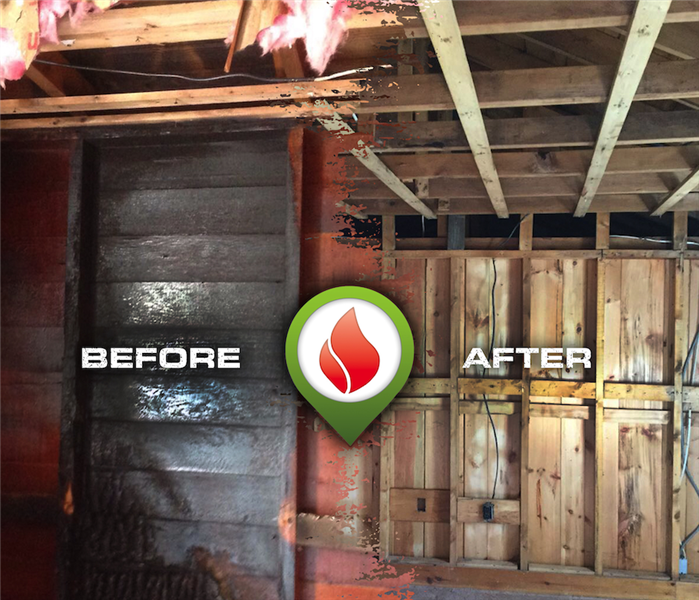 SERVPRO fire cleanup technicians are ready at a moment's notice for the help you need. 24/7 365 days a year.
SERVPRO fire cleanup technicians are ready at a moment's notice for the help you need. 24/7 365 days a year.
SERVPRO Emphasizes Variety during East Lynn Fire Cleanup
Soiling and other changes that develop in a house are readily identifiable. What might not be sure is how to address them, restoring your East Lynn property to its preloss state. Luckily, there are many cleaning methods that you can rely on to facilitate fire damage restoration. It is easier to explore such ways with the help of a professional team.
The effectiveness of the cleaning methods used during fire restoration in East Lynn homes depends on how vast the affected areas are or the intensity of soiling. The materials in the affected areas also play a role since some are highly vulnerable to moisture exposure, so methods that involve the use of liquids may do more harm than good. SERVPRO evaluates the soils, underlying materials, and the ingredients of a cleaning product.
Categories of cleaning approaches:
- Dry cleaning
- Wet cleaning
- Abrasive cleaning
- Specialized methods
Dry cleaning methods do not involve any liquids. However, their effectiveness is limited against severe soils. Our SERVPRO technicians use dry cleaning as a precursor to other methods or where fire damage only involves light or moderate residue accumulation. One typical dry cleaning method is wiping surfaces with chemical sponges. Wet cleaning helps when significant soiling or deeply embedded materials are involved. Wet cleaning mostly takes chemicals that react with soils loosening the bonds they have with surfaces. Wet cleaning products can also lubricate or dissolve the soil facilitating easier removal.
Removing Soils Physically
Abrasive cleaning may be regarded as a dry cleaning method since it does not involve any wetting of surfaces. However, abrasive cleaning may degrade the surface, making it a last resort where other forms are deemed ineffective.
Various Abrasive Cleaning Methods
SERVPRO of Lynn / Lynnfield provides any resources you might need in facilitating fire restoration at your property. Call us at (781) 593-6663. We’re Faster To Any Size Disaster.
Importance of Deodorization during Fire Restoration of Lynn Homes
5/15/2022 (Permalink)
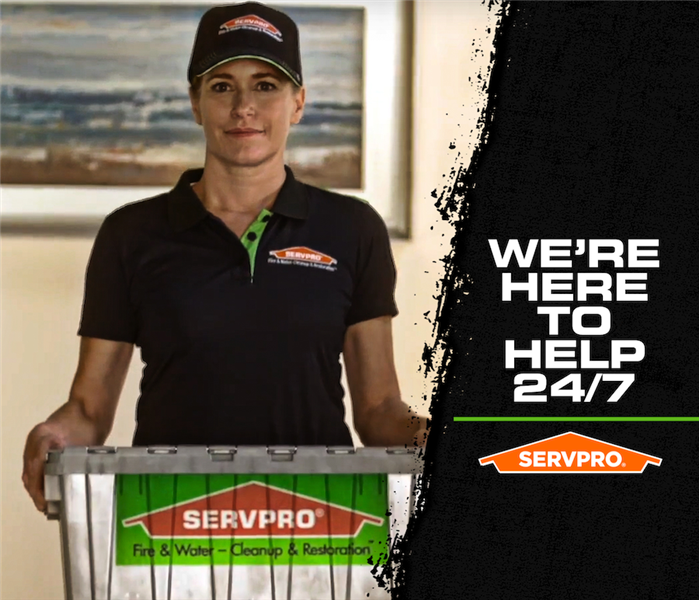 SERVPRO fire damage restoration specialists are always ready to help anyone at anytime. We will be on-site within 4 hours of the initial call.
SERVPRO fire damage restoration specialists are always ready to help anyone at anytime. We will be on-site within 4 hours of the initial call.
SERVPRO Mitigates Odors to Manage Fire Damage in Lynn
Odors are common after fire incidents. Although smells are invisible, they make it uncomfortable to stay inside a house, especially over extended periods. It is easy to ignore odors during fire restoration since they are expected to dissipate on their own over time. However, your Lynn home may require elaborate deodorization to restore its preloss conditions.
Before thinking of deodorization, it is essential to ensure the other fire restoration processes your Lynn property requires are well executed. Odors are highly prevalent when combustion residues, charred materials, moisture, and firefighting chemicals are still within the property. SERVPRO eases the effort to fight odors by cleaning up a property thoroughly before starting odor management processes. We also have a better understanding of odor issues.
Things to note when dealing with fire-related smells:
- Odors are deeply embedded
- Odor molecules are volatile
- Malodors are vastly spread in a property
Unlike soils and other physical issues, which are mostly restricted at the surface of a material, smells tend to be deeply embedded in materials. Therefore, no matter how thorough, cleaning is not that effective in combating them. When done properly, deodorization works on the surface and penetrates deep into materials neutralizing the embedded molecules. Our SERVPRO teams use methods such as thermal fogging or running activated oxygen generators to combat deeply embedded malodors.
Changes Related to Odors
Unlike other soils which remain static, odors emanate from volatile compounds which continually release the molecules into the air, resupplying the bad smell in the house. Therefore leaving any section unaddressed is not ideal. Unfortunately, some materials such as structural supports or HVAC ducts may be difficult to work on or access. Our SERVPRO technicians apply unique solutions to resolve such situations.
Advanced Deodorization Methods
- Sealing surfaces
- Enzyme digesters
- Activated oxygen
SERVPRO of Lynn / Lynnfield can conduct a thorough fire restoration exercise leaving your home odor-free. You can reach us at (781) 593-6663.
Pre-Existing Damage Impacts Fire Restoration in Lynn
4/24/2022 (Permalink)
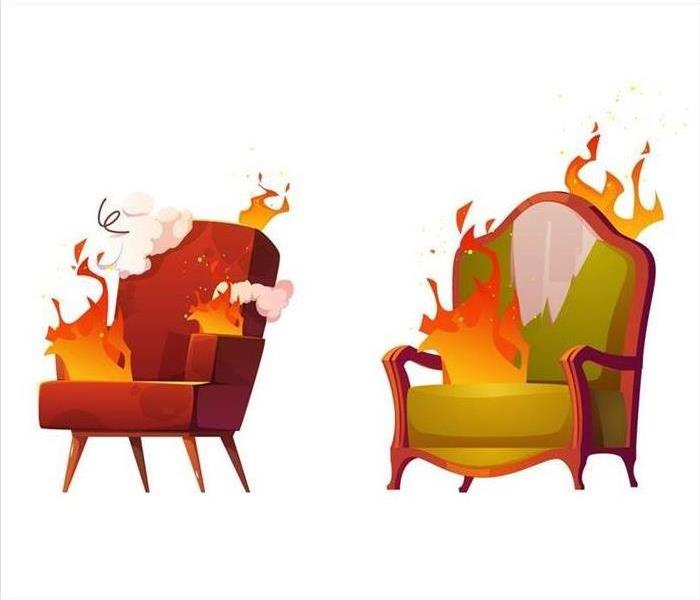 SERVPROs IICRC certified technicians have all the fire restoration training needed for every size disaster. Call now!
SERVPROs IICRC certified technicians have all the fire restoration training needed for every size disaster. Call now!
The Scope of Lynn Fire Restoration Efforts Can Be Increased by Pre-Existing Damage
Before starting fire cleanup and restoration efforts, Lynn area fire remediators check to see if there is pre-existing damage present. Performing this check is crucial because it identifies what your insurance should cover and how issues existing before the blaze might raise the cost of repairs and increase the time necessary to return your home to its preloss condition.
SERVPRO’s fire restoration experts in Lynn are always vigilant in locating and identifying problems your residence might have had prior to the house fire in question. Our fire restoration pre-checks help determine what fire and smoke damage are related to the current event and guide the proceeding house fire clean up and smoke remediation work.
Often, when we test fire-damaged homes, we uncover the following pre-existing issues:
- Central heating and air conditioning ductwork filled with non-fire-related dust/dirt that has accumulated on its surfaces over many years, which could make cleanup more difficult
- Smoke residues deposited by forced air heating systems that cover ceilings, walls, and other surfaces throughout your residence and represent an additional remediation issue
- Cigarette and cigar smoke stains/remnants that have discolored structural elements
- Dark coronas or outlines left on walls by hot devices like TVs and microwaves
- Structural damage from termites, dry rot, and other pre-existing issues that necessitate the replacement of elements, increase costs and lengthen restoration times
- Construction not up to current building or fire codes that needs to be updated
Rest assured that your knowledgeable friends at SERVPRO of Lynn/Lynnfield are usually going to identify all potential fire restoration problems before they begin their remediation work. In doing so, they are likely to save you a lot of time and money. So, whenever you need our help, don’t hesitate to call us at (781) 593-6663.
Fire Restoration in Lynn Begins with Scoping the Structure
4/6/2022 (Permalink)
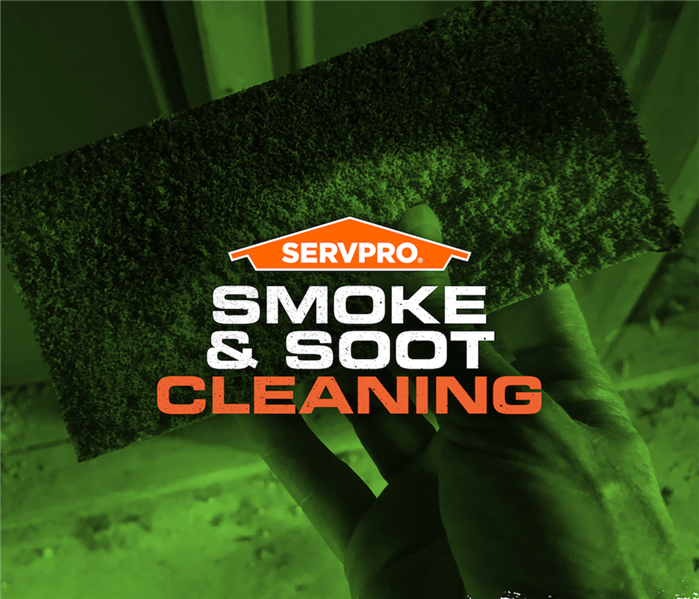 SERVPRO fire restoration services are second to none. We will be on-site within 4 hours of the initial call.
SERVPRO fire restoration services are second to none. We will be on-site within 4 hours of the initial call.
Several Procedures Are Involved in Fire Restoration Scoping in Lynn
An important first step in the fire remediation process is finding out the extent, type, and cleanup requirements of your fire-damaged Lynn home. Knowing this information enables restoration firms to determine what equipment and supplies are necessary to complete the job and the time it might take to finish the work.
SERVPRO, a Lynn fire restoration service, follows all of the generally accepted procedures for properly evaluating residences impacted by fire. Once our technicians arrive on-site, they quickly assess the fire and smoke damage of fire-damaged homes. After they have gained sufficient knowledge of your particular situation, SERVPRO begins its house fire cleanup and fire restoration efforts.
In general, our scoping measures involve:
- Measuring the dimensions of affected rooms and determining the extent, or impact number and percentage, of materials fouled by the fire-related event
- Pre-testing all surfaces, exposed and hidden, with a dry cleaning sponge first to see if the dry method can be used to remove discovered residues
- Then, performing wet cleaning pre-tests on surfaces not responding well to the dry test with a cleaning cloth and a pre-mixed solution of Wall and Surface Cleaner #351 or this cleaner enhanced with Solvent Additive #253 if the residue is greasy
- Wiping away pre-testing effects so that contrasts between test sites and other areas are eliminated or reduced as much as possible
- Documenting pre-existing issues on a scope sheet and preventing secondary damage by cleaning acidic residues off of and lubricating expensive metal features like faucets and appliance trims
- Carefully avoid disturbing hazardous materials, like lead and asbestos, and refer such issues to a qualified abatement contractor
So, if your home ever needs fire restoration, don’t hesitate to call your helpful neighbors at SERVPRO of Lynn/Lynnfield. Our experts are always ready to assist you at (781) 593-6663.
24/7 Fire Damage Restoration for Residents in East Lynn
3/3/2022 (Permalink)
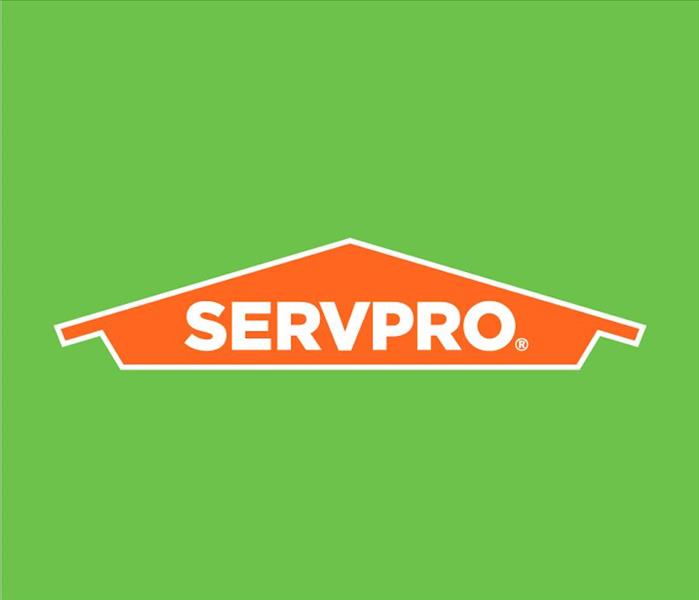 Fire damage restoration services by SERVPRO are second to none. Call now for fast and immediate service for your home.
Fire damage restoration services by SERVPRO are second to none. Call now for fast and immediate service for your home.
SERVPRO is Trusted in East Lynn for Fire Damage Restoration
Nothing causes panic more than a fire in your East Lynn home, which is why you need someone there to take up the burden of cleaning and restoration. SERVPRO makes it “Like it never even happened,” so you can return to life as usual without lingering reminders that a fire emergency took place.
At SERVPRO, we believe that fire damage restoration in East Lynn deserves a customized approach. We are locally-owned and operated, so we care about our local community. We want to see all customers get their life and home back in order after any restoration emergency.
Our IICRC-certified technicians have you covered for house fire cleanup:
Never let a fire damage situation get out of control. We have the techniques and training to restore your property to pre-fire condition.
- Smoke remediation and soot cleaning – Soot and smoke residue settle on contents and surface areas throughout the home. We use specialized cleaning methods and techniques to handle wet, dry, or sticky residues – addressing damage and foul odors.
- Odor control – As mentioned, stubborn odors are commonplace with any fire situation. Combustion often leaves noxious, harsh odors that pose challenges only our Odor Control Technicians (OCT) know how to handle. We begin surface cleaning while fire debris gets removed. Our crew also has access to various tools and equipment like hydroxyl generators, powerful HEPA filtration, and odor counteracting beads to get the job done right the first time.
There are plenty of reasons to choose SERVPRO after a fire on your property. Not only are we quick to arrive, but you can also look to us for guidance and explanations throughout the cleanup and restoration. When necessary, we act as a liaison with your insurance provider to ensure your claim goes smoothly.
Restore versus replace with the help of SERVPRO of Lynn/Lynnfield! Call us 24/7 for emergency service at (781) 593-6663.
Which Fire Damage Aspects Do Lynn Homeowners Underestimate?
1/17/2022 (Permalink)
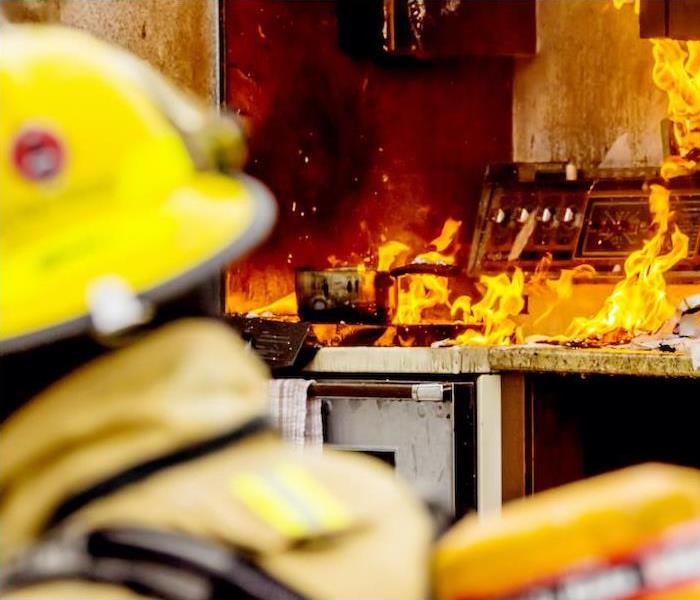 When a fire strikes your home, SERVPRO fire damage restoration techs should be your first call. We are ready 24/7 365 days a year.
When a fire strikes your home, SERVPRO fire damage restoration techs should be your first call. We are ready 24/7 365 days a year.
SERVPRO Helps Evaluate the Impact of Issues Like Smoke in Your Lynn Residence
Of the many damages caused by fires in properties, one may not expect smoke to have severe effects or require costly restoration because, unlike heat and flames, it does not consume materials. Therefore it is easy to underestimate the restoration work needed for your Lynn home to regain its preloss state.
Smoke is a significant aspect of fire damage that leaves Lynn properties in a worse state. Smoke readily spreads to most house sections, unlike the other fire elements like heat and flames, which progress systemically and are contained when extinguished. SERVPRO provides highly technicians to help resolve smoke damages.
Addressing smoke damage involves activities like:
- Deodorizing furniture
- Cleaning porous and hard surfaces
- Replacing wallpaper and insulation
- Inspecting appliances
Smoke is made up of particulate matter, aerosols, and moisture, among other things. As smoke billows out of the structure through openings like windows, it touches surfaces and items all over the house. The particulate matter and moisture it contains are deposited on the materials. Therefore, every surface and object in a home requires cleaning to remove the smoke residues.
Various cleaning methods are necessary within one property because of:
- Different types of residue left
- The different materials affected
- Condition of the affected materials
One broad classification of smoke residues is whether they are dry or wet. Wet residues are difficult to clean since they adhere strongly to surfaces. They are produced by shouldering fires or when synthetic materials such as plastics burn. SERVPRO restoration technicians help by evaluating the type of residues to determine cleanability and then using advanced cleaning techniques to tackle stubborn soils.
Smoke odor is another significant category of damage. Odor is significantly harder to manage in furniture items. However, our SERVPRO technicians use powerful solutions such as thermal fogging, which can reach all nooks and crannies, neutralizing all odors.
SERVPRO of Lynn / Lynnfield can help take care of any fire damage issue at your property “Like it never even happened.” Call us at (781) 593-6663.
What Can Lynn Homeowners Expect from the Fire Cleaning Process?
8/3/2021 (Permalink)
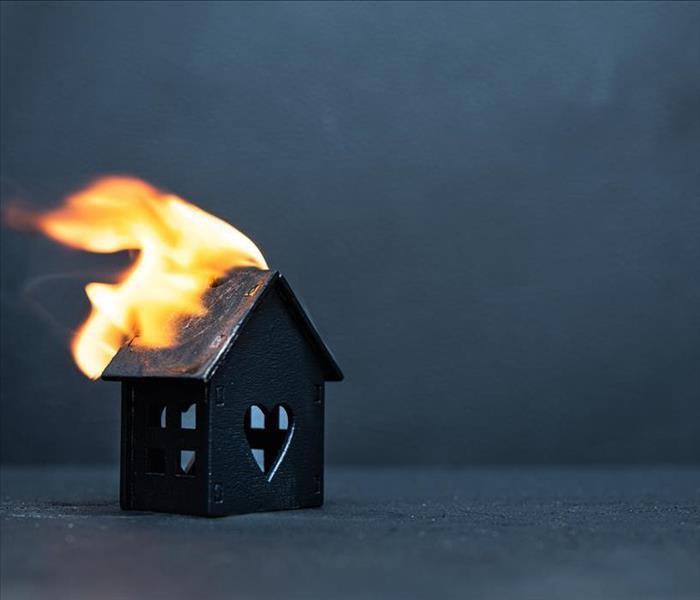 Fire and smoke damage restoration is a job for SERVPRO. We will be on-site within 4 hours of the initial call.
Fire and smoke damage restoration is a job for SERVPRO. We will be on-site within 4 hours of the initial call.
Our cleaning process is a consistent element to restore Lynn homes to pre-fire condition.
House fire clean-up and smoke remediation are intricate processes after disasters. Evaluating the condition of the house and its damaged areas can determine the best restoration and mitigation steps to help.
What Are the Typical Focal Points of Post-Fire Cleaning?
When fire damage restoration in Lynn homes gets started, our SERVPRO team must focus on specific obstacles that could lead to worsening conditions for the structure. Some of these include:
- Remove Smoke Residues – Soot and smoke residues or soils come to rest on surfaces and contents, requiring several products and practices to remove them entirely.
- Remove Malodors – While much of the deodorization process comes later, house fire clean-up is not complete without overcoming harsh smoke odors. Air scrubbers, hydroxyl generators, and thermal fogging are some options for odor elimination.
- Remove Blistered Contents – Destroyed and ruined contents or furniture cannot remain in the house. We can safely pull these from the residence and discard them appropriately.
- Remove Ruined Building Materials – Controlled demolition, and bulk material removal can be vital mitigation steps to prevent structural collapses, identify weak points, and reduce hazardous environmental conditions.
Managing fire losses in your home begins with trusting the property to skilled restoration professionals like our SERVPRO of Lynn / Lynnfield team. We have clear mitigation strategies to protect the property and its contents from further harm. Call us at (781) 593-6663.
Does SERVPRO provide Fire and Smoke Cleanup in Lynn?
7/22/2021 (Permalink)
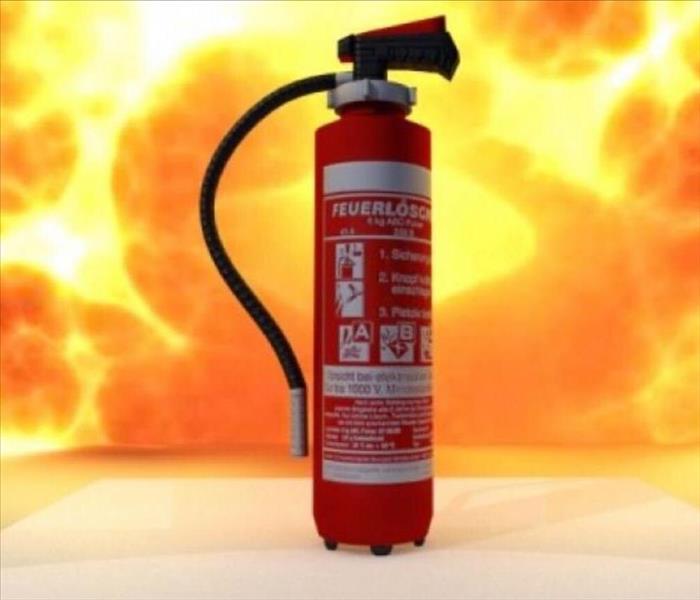 Fire damage done to your personal property occurs SERVPRO should be the first call you make. Our techs are trained and experienced in all phases.
Fire damage done to your personal property occurs SERVPRO should be the first call you make. Our techs are trained and experienced in all phases.
Need Fire and Smoke Damage Restoration and Cleanup in Lynn – Call SERVPRO
Most consumers think of smoke residue as oily grime that must be removed from the walls, floors, and home contents. Smoke residues can be oily, they can also be fluffy, and the residue can also be acidic or alkaline depending on the material consumed in the fire. Strong acids or strong alkaline smoke residues can further damage your contents if left in place too long.
SERVPRO provides fire and smoke cleanup to homeowners and businesses in Lynn. We respond to your home in less than four hours, assess the situation, and deploy fire restoration and smoke remediation technicians immediately. We know our clients are anxious to have their homes back in one piece, cleaned and deodorized.
Burning plastics produce chlorides that combine with water to form hydrochloric acid. Combustion from fires also produces carbon dioxide, which produces carbonic acid after combining with moisture. Although in most cases are mildly acidic, these substances can damage fabrics, porous materials and cause discoloration and corrosion of other materials over time. Our technicians test for acidic and alkaline smoke residue and utilize the appropriate cleaning materials suitable for acids and alkaline residues.
SERVPRO can help residents with all of their fire clean-up needs. Our services include:
- House Fire Clean Up
- Water and Fire Damage Restoration
- Smoke Damage Cleanup
Call SERVPRO of Lynn / Lynnfield for fire and smoke cleanup in Lynn and surrounding areas. We can help 24/7. Call (781) 593-6663.
SERVPRO Offers Fire Restoration Services in East Lynn
7/12/2021 (Permalink)
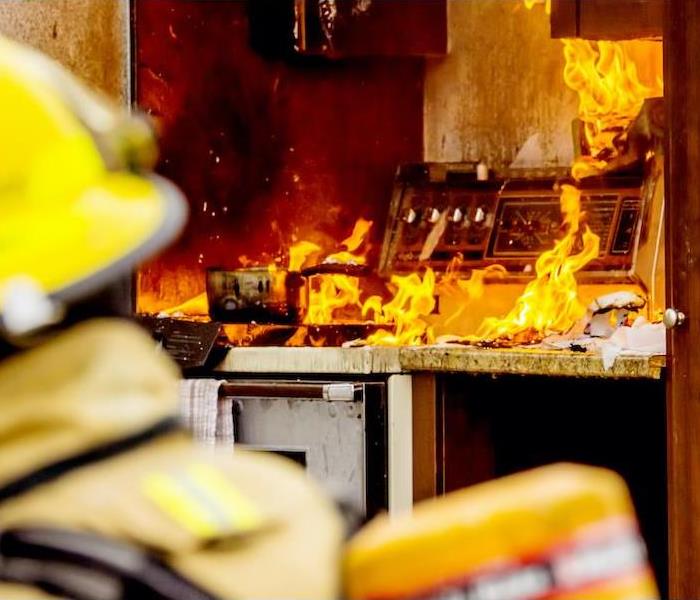 When a fire disaster strikes, call SERVPRO A.S.A.P. Let our trained and ready technicians handle the work for you.
When a fire disaster strikes, call SERVPRO A.S.A.P. Let our trained and ready technicians handle the work for you.
Can SERVPRO Help with Disposal of Fire Damaged Contents in East Lynn?
Many East Lynn residents are surprised at the contents and structural material that must be carted away after a fire. Even a small kitchen fire causing damage to the contents of the kitchen and the cupboards around the oven where the fire took place can cause a lot of damage.
SERVPRO can help with fire restoration in East Lynn. Restoring a home after a fire involves many steps; however, one of the initial actions is to assess what items can be saved and which items must be replaced. Many nonporous items, although they may appear to be severely damaged, can be cleaned. Once we remove the ash and smoke residues, we can save many of your contents.
Structural components and contents damaged by the flames and fire retardants often must be removed. Depending on the amount of material, SERVPRO can arrange for a trailer or dumpster to dispose of these items. We can dispose of leftover restoration materials in this manner.
SERVPRO manages every aspect of the restoration and restores your home, “Like it never even happened.” Our fire restoration services include:
Call SERVPRO of Lynn / Lynnfield for fire restoration in East Lynn and surrounding areas. We can help 24/7. Call (781) 593-6663.
Does the Initial Fire Restoration Inspection Identify Hazards in East Lynn Homes?
6/17/2021 (Permalink)
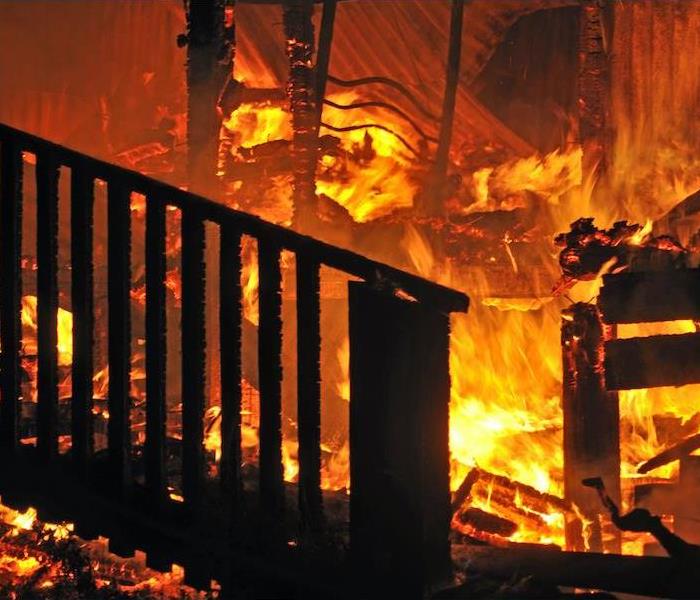 Fire damage restoration isn't an easy job. SERVPRO has IICRC certified technicians and is ready at a moment's notice.
Fire damage restoration isn't an easy job. SERVPRO has IICRC certified technicians and is ready at a moment's notice.
Damage assessment is vital to creating a safe work environment for fire restoration in East Lynn properties.
Evacuating a damaged home after a fire damage incident is not uncommon, as many possible threats and hazards could exist for those unprepared or unprotected. While the damage assessment and job scoping process can be a critical step for securing damage claim approval and a restoration plan, this inspection must also seek to find any hazards that might expose workers or bystanders to harm in any way. Some of these dangers might include:
- Overhead threats (such as ceiling collapses)
- Electric shock
- Poor lighting
- Debris and tripping hazards
- Circulating carcinogens and contaminants
Creating a Safe and Clean Staging Area Can Benefit East Lynn Homes
A staging area is a method for our SERVPRO professionals to safely begin fire damage restoration in East Lynn homes without a considerable concern for cross-contamination or spreading fire damage. This becomes a convenient location for readily accessible tools, machines, and cleaning products as they are necessary without multiple trips to a vehicle outside.
When fire damage incidents threaten your home or business, you can count on our SERVPRO of Lynn / Lynnfield team to help. We can make fire damage “Like it never even happened,” when you call (781) 593-6663
Can Fire Restoration Processes Minimize The Need for Replacing Items in Lynn Properties?
5/14/2021 (Permalink)
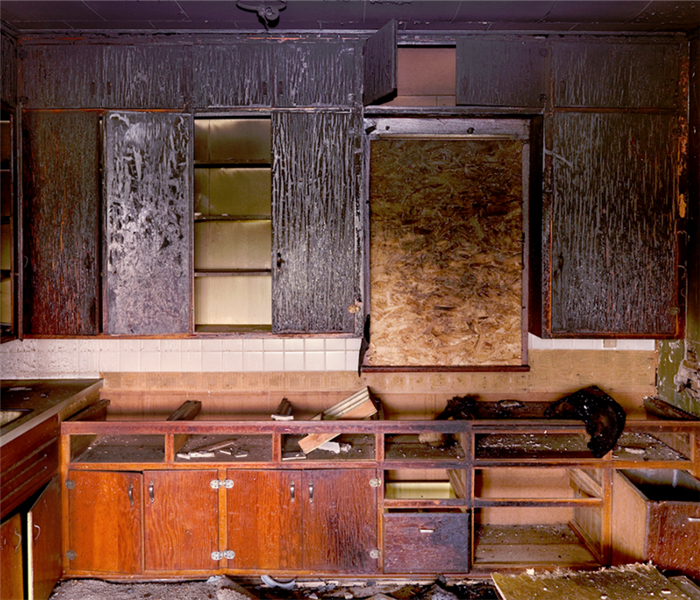 Recent fire in your home? Team SERVPRO has the tools and trained personnel for fire damage remediation. Call us right away.
Recent fire in your home? Team SERVPRO has the tools and trained personnel for fire damage remediation. Call us right away.
SERVPRO Relies on Advanced Techniques during House Fire Cleanup Improving Chances of Item Recovery
In many cases, the aftermath of a fire is characterized by piles of damaged items strewn all over the affected property. Demolition and removal of the damaged materials is, therefore, necessary as part of fire damage restoration.
You can keep the cost of fire restoration in your Lynn property low by minimizing the number of items you have to replace during the restoration process. It is possible to save more items through restoration using skilled approaches and sophisticated equipment.
One crucial phase of the restoration process is isolating items based on the level of damage they have. Salvageable and questionable items can be saved through specialized cleaning, drying, or deodorization. After categorizing the items, our SERVPRO technicians can use various cleaning techniques such as:
- Ultrasonic cleaning for small items that can be immersed in cleaning solutions
- Blast cleaning with non-abrasive media such as sodium bicarbonate
- Cleaning with semi-refinishing products such as wood crème paste
The unique approaches help save materials and thus keep costs manageable when dealing with:
- Fire damage restoration
- Fire and smoke damage
- Fire damaged homes
Call SERVPRO of Lynn / Lynnfield when you fire restoration services. You can reach us at (781) 593-6663 at any time.
How to Clean Up Fire Damage From a Toaster Oven?
3/15/2021 (Permalink)
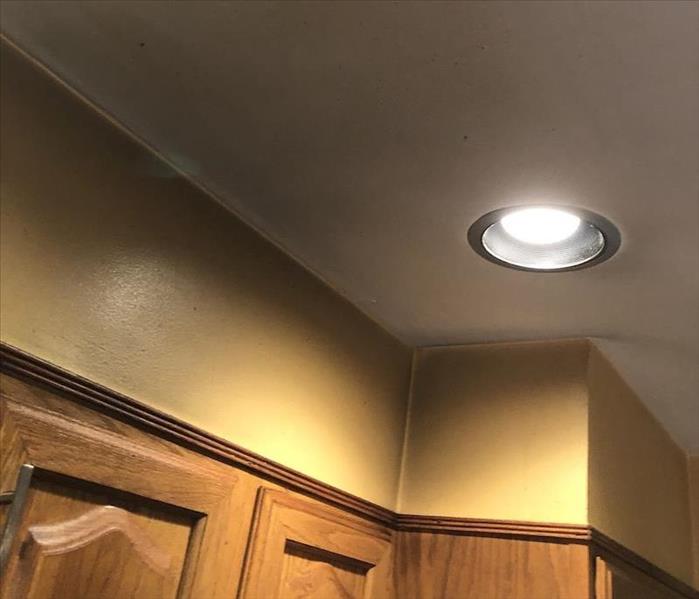 Kitchen fires may happen any time. SERVPRO techs are ready 24/7 365 days a year for fire restoration services you need.
Kitchen fires may happen any time. SERVPRO techs are ready 24/7 365 days a year for fire restoration services you need.
SERVPRO Can Remediate the Fire Damage in Your East Lynn Home!
Fire damage occurs in American kitchens reasonably often, as cooking directly uses heat. Kitchen appliances, such as toaster ovens, are incredibly convenient for everyday life. However, it is vital to use them properly and to keep them clean.
Neglecting to keep the toaster oven in your kitchen could cause fire damage in your East Lynn home. Everyone gets busy, and the problem could occur faster than you realize. One moment, you're tiredly trying to heat something, and the next, you have a small kitchen fire on your hands. When you call SERVPRO for help, we can:
- Rush to your home no matter what time you need help
- Come to your home with advanced technology
- EPA Inspect the damage and create a remediation plan
Most apartment homes have fire suppression systems. In the past, a simple sprinkler system was in place. Modernly, a powder is used to snuff the flames, and unfortunately, your small kitchen fire could make quite the mess because of it. However, our technicians can:
- Clean up the suppression powder in your kitchen using vacuums
- Remove soot with house-made cleaning agents
- Clean up melted plastics and burnt food-products
When it comes to fire damage, never leave your home waiting. Contact SERVPRO of Lynn / Lynnfield by the number (781) 593-6663. We're open 24/7!
Disaster Mitigation for Lynn Homes from a Local IICRC-Certified Firm
11/8/2020 (Permalink)
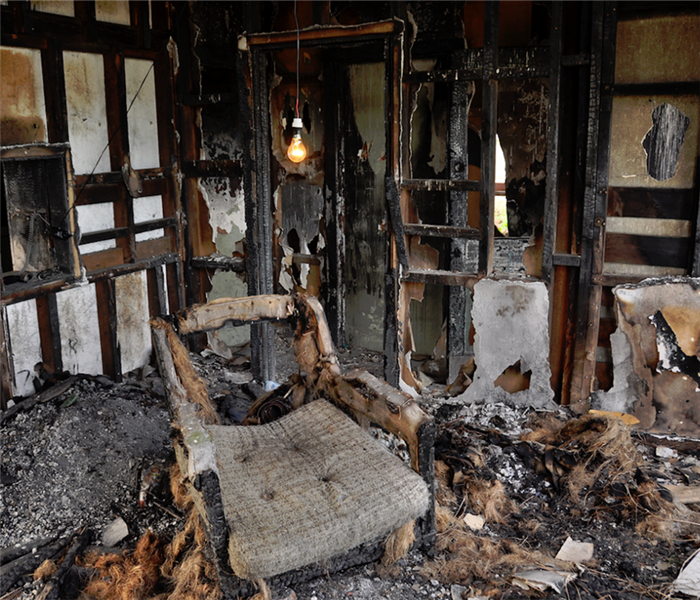 When fire affects your home, team SERVPRO can help. Contact our certified technicians for fire damage remediation services.
When fire affects your home, team SERVPRO can help. Contact our certified technicians for fire damage remediation services.
SERVPRO of Lynn / Lynnfield is a Phone Call Away from Returning Fire-Damaged Homes in Lynn to a Pre-Loss State
Lynn, Massachusetts, founded in 1629, is among the largest cities in the Commonwealth and one of the oldest. Today, this integral part of the Greater Boston area is best known for its unique combination of contemporary art and historic architecture. This city’s gradual shift from an industrial powerhouse to a cultural landmark in the Commonwealth makes for a unique history.
Local offerings for the over 90,000 residents of Lynn include a diverse array of activities and venues such as:
- The Grand Army of the Republic Museum on Andrew Street, a military museum constructed in 1885 with exhibitions dating from the American Revolution through the Korean War
- The winding trails of Lynn Woods, a sprawling forest reserve packed with both flora and fauna that nature lovers are sure to enjoy
- The Lynn Auditorium, which regularly hosts big-name performers. Upcoming performances in late 2020 and early 2021 include The Irish Tenors, Christopher Cross, and Brian Culbertson
This historic city got its start as an English settlement shortly after the founding of Salem. The town initially got its name from a similarly-named market town in England, originally known as Bishop’s Lynn, until being renamed to King’s Lynn in the sixteenth century.
During this colonial period, Lynn was most renowned for its shoe-making and tannery, which focused on leather goods. To this day, the city seal features a colonial boot that is evocative of its history with shoe manufacturing. In the nineteenth century, this focus expanded into dozens of factories and several tanneries opening to accommodate the demand for shoes and leather goods.
Lynn’s booming shoe industry allowed entrepreneurs to invest in electricity through such companies as the Thomson-Houston Electric Company, which would merge with Edison Electric to form General Electric before the end of the nineteenth century. GE started as a manufacturing hub for various electrical components before expanding into aircraft engine manufacturing during the Second World War.
The First and Second Great Fires of Lynn
Unfortunately, Lynn has experienced several large fires throughout its history, including a 3-alarm fire in a three-story house on Chestnut Street in May 2020. In particular, two fires have left indelible marks on the city almost a century apart from one another.
The Great Lynn Fire of 1889
On the afternoon of November 26, 1889, a fire ignited at Almont and Oxford Streets that spread rapidly, eventually destroying Central Square and decimating Lynn’s business district. This fire spread incredibly quickly due to the prevalence of wooden structures. While no serious injuries or deaths were reported, the local economy took a significant hit.
- Over 100 buildings were destroyed by the fire
- Losses incurred were totaled at over $5 million at the time, or over $164 million today
- According to The Boston Globe, on the following day, buildings on several streets were destroyed
- Commercial losses included over 150 factories, over 120 houses, 80 shoe manufacturers, four banks, and three newspaper companies
The Second Great Lynn Fire of 1981
The 1970s and 1980s were hard on Lynn, as the city endured many large fires, the most disastrous of which occurred at a shoe factory on November 28, 1981. This fire required the assistance of a whopping 94 communities from Rhode Island, New Hampshire, and Massachusetts to extinguish.
Damages incurred included an estimated $80 million of property loss to seventeen downtown properties. The affected area on Washington and Broad Streets has since been redeveloped into loft apartment buildings and a satellite campus of North Shore Community College. While the fire was later determined to be an arson, no suspects were convicted of the crime. The only associated charge was for perjury committed in a federal court.
Lynn: A City of Resilience
In the early 1990s, while on the road to recovery from several major fires in the past decade, marketing for the city shifted to focus on the city’s achievements, which included:
- The first ironworks, tannery, fire engine, and operable electric streetcar in Massachusetts
- The birthplace of Lydia Pinkham, the first woman in advertising
- Home of the United States’ first dance academy
The early 2000s saw a shift from industrial districts to revitalizing historic districts into cultural centers. Revitalization efforts are ongoing, focusing on converting former industrial complexes into mid- to high-end lofts. These efforts have led to downtown Lynn being formally recognized as an arts and culture district by the Massachusetts Cultural Council.
SERVPRO of Lynn / Lynnfield’s team has extensive training and certification in fire damage cleanup and restoration. The faster these tasks are performed by licensed professionals, the more quickly communities can be safely restored to a safe and comfortable condition.
How Does SERVPRO’s Fire Damage Cleanup Remove Smoke Odors from Lynn Homes?
SERVPRO technicians are licensed to render fire and smoke damage cleanup for Lynn properties with industrial-grade mitigation tools and EPA-registered antimicrobial solutions that sanitize spaces and kill odors.
Smoke odors, fire damage soils, and protein residues can contribute significantly to persistent odors in your home. SERVPRO Odor Control Technicians (OCTs) use a variety of deodorization methods to address these soils, including:
- Removing unsalvageable, odor-causing debris from the property
- Manually dislodging loose soot deposits with agitating tools
- The use of sophisticated technologies like hydroxyl generators and HEPA filter air scrubbers
- Abrasion cleaning with soda ash, which offers a certain degree of deodorization
- Time-release odor control pellets and counteractant beads
SERVPRO’s Institute of Inspection Cleaning and Restoration Certification (IICRC) training allows local teams to service your property according to restoration industry standards 24 hours a day, seven days a week.
SERVPRO of Lynn / Lynnfield has an emergency response team on standby to make your home look and feel, “Like it never even happened.” Call (781) 593-6663 to begin the restoration process within hours of your initial contact.
How Do Fire Damage Restoration Services Return Your Lynn Home to Its Pre-Fire Condition?
10/31/2020 (Permalink)
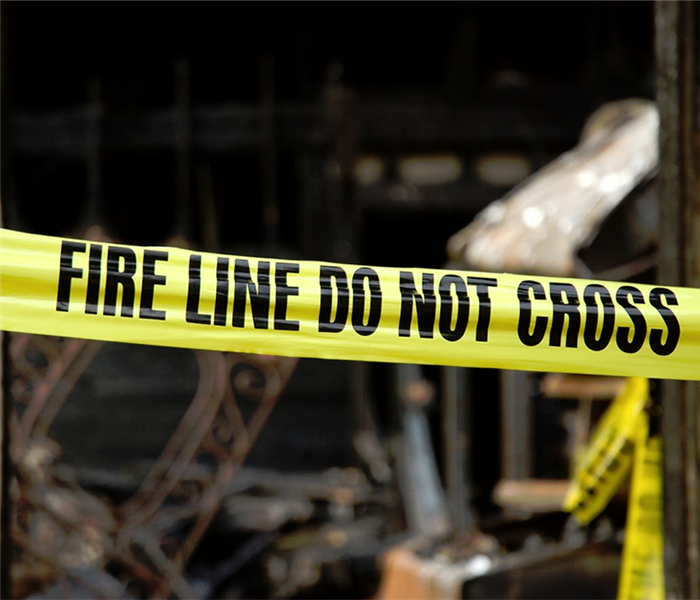 Repairing your home after fire damage is a hard task to tackle alone. Contact SERVPRO for professional remediation and mitigation services.
Repairing your home after fire damage is a hard task to tackle alone. Contact SERVPRO for professional remediation and mitigation services.
In General, Lynn Fire Damage Restoration Services Eliminate Fire-Related Airborne Particles and Soot Residues, as Well as the Foul Odors They Cause.
As Lynn house fires burn, they produce two main things: odorous airborne particles and acidic soot residues. Airborne particles spread throughout your home, landing on various surfaces, while residues are left behind by burned substances.
How Do Remediators Remove Harmful Particles and Residues from Your Home?
Lynn fire damage restoration companies like SERVPRO work to eliminate these residential fire products. Various steps are taken to clean the interior air of your home and remove combustion remnants from impacted surfaces. Once onsite, SERVPRO technicians:
- Employ advanced air movers and high-velocity box fans to suck in and push out odorous smoky air from your interiors
- Use state-of-the-art air scrubbers to remove smoke particles from the air and surfaces around your residence
- Clean up smelly soot residues from your ventilation network with innovative HVAC cleaning systems
- Remove acidic residues from household surfaces via wet, dry, or abrasive methods
- Deodorize impacted upholstery and carpeting with deodorant injectors
- Neutralize any odorous airborne particles with Vaportek systems and ozone generators
- Generate smell counteracting fogs with sophisticated foggers to further deodorize affected spaces and materials
Once these steps have been taken, the basic restoration process is generally complete. However, depending on the extent of your home’s fire damage, we may also need to reconstruct rooms or areas of your residence destroyed by the blaze.
When it comes to fire risks, you can never be too safe. Always be sure to avoid fire-related hazards whenever you can. SERVPRO advises that you practice safe cooking habits, like never leaving cooking food or children unattended or allowing cooking oil to overheat, and always keep a class ABC fire extinguisher in your kitchen. Also, properly maintain and periodically clean all household appliances.
Call your helpful neighborhood SERVPRO of Lynn/Lynnfield at (781) 593-6663 if you ever need assistance.
Click here for more information about Lynn.
How are Contents Cleaned During Fire Restoration?
10/22/2020 (Permalink)
 The situation can feel quite overwhelming when your home and belongings are affected by fire damage. Contact SERVPRO for remediation services.
The situation can feel quite overwhelming when your home and belongings are affected by fire damage. Contact SERVPRO for remediation services.
SERVPRO Handles the Cleaning of Your Lynnfield Home’s Contents Using Proven Fire Damage Restoration Techniques.
Fire is a destructive force that can leave behind thousands in damages, even if it only impacted one room of your home. When addressing the contents of your Lynnfield home, it is not always the case that everything is a total loss after a fire. SERVPRO features highly-skilled fire restoration technicians (FRT) ready to handle pack-outs and specialized contents cleaning services. We’re Faster to Any Size Disaster, giving us plenty of time to address soot and smoke damage before it has time to set in and create costly secondary damage.
Why Do I Need Pack-Out Services?
Often, the fire damage restoration process in Lynnfield is more manageable when our crew carefully inventories, packs up, and transports items off-site for cleaning. This frees up space to allow our team the room necessary to address structural damages and debris. Not only that, but we also have specialized cleaning tools available at our facility to handle varying levels of fire damage from soot, smoke, and moisture left from the water or chemicals used to extinguish the blaze.
The way that we handle contents cleaning includes:
- Appliances – Non-absorbent surfaces, such as metal, plastic, and glass, can get cleaned using water-based detergent solutions.
- Books – The severity of the damage determines how we proceed when cleaning books. Light smoke residues are often handled with dry cleaning methods like brushing, compressed air, and vacuuming. Moderate or heavy residue calls for more aggressive measures, including alkaline surface cleaners or thermal fog deodorizing.
- Upholstered Furniture – We always test materials before cleaning to select the right method for the job. Dry soils get cleaned first, followed by dry solvents to ensure no shrinkage, bleeding, or browning occurs.
SERVPRO of Lynn/Lynnfield is the team to call if you want help handling your contents during fire damage restoration. Call (781) 593-6663, and we can dispatch a crew 24/7 to get to work.
How Does SERVPRO Decide What to Clean During Fire Damage Restoration?
10/2/2020 (Permalink)
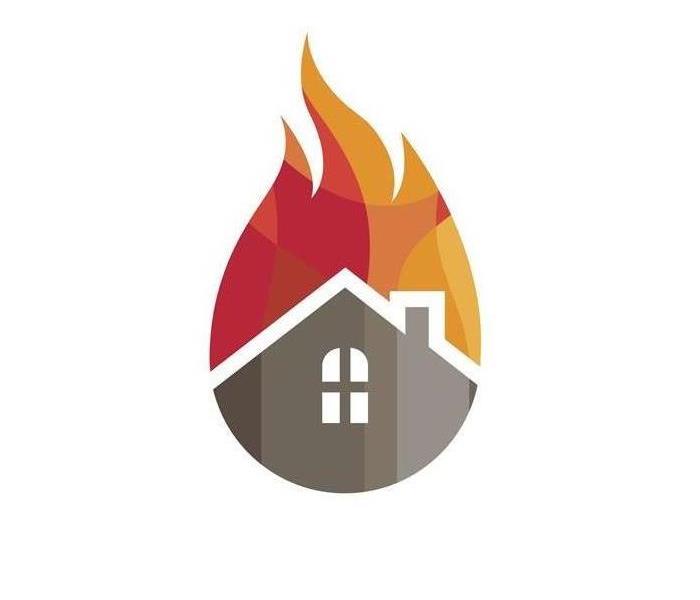 SERVPRO Can Help Homeowners in Lynn when They Are Confronted with fire damage.
SERVPRO Can Help Homeowners in Lynn when They Are Confronted with fire damage.
Lynn Homeowners Want to Know if SERVPRO Can Save Their Belongings.
Lynn homeowners only need to take a quick look around to realize just how many possessions a home can contain. Whether you live with a family or live alone, it is effortless to accumulate furniture, clothes, knick-knacks, etc. If there is a fire in your home, your belongings provide fuel for the flames, which is a sobering thought.
Residents who need fire damage restoration in Lynn are curious about what SERVPRO can save from smoke damage, and how we decide what to clean and what to toss. Many factors affect the cleanability of an item.
What can SERVPRO clean after a fire?
Fire spreads quickly, and in a very short time, your belongings can burn. We understand how distressing it is to see your home after a blaze. Thankfully, we have the tools and cleaning products to clean most household items:
- Clothes, linens, towels, and drapes
- Wooden furniture and cabinets, textiles, and carpets or rugs
- Documents, art, photographs, and craft supplies
- Ornaments and keepsakes
It is our policy to clean items rather than replace them, if possible. Cleaning is cheaper than replacing things, it makes it easier to claim on your insurance, and it lessens the emotional impact of losing precious belongings.
We cannot save items that have suffered extensive physical damage. For example, we cannot salvage clothes that are burned beyond wearing or furniture that is warped to the point that it is unusable. These items were often close to the heart of the fire. However, as we move out from the source and into the rest of your home, we will find many not physically broken items. Instead, we start seeing things covered in smoke stains, and our technicians are highly skilled at dealing with those.
What difference does the kind of smoke make?
The kind of smoke makes a big difference to the cleanability of an item:
- Dry smoke residue is powdery and easy to clean away from surfaces
- Wet smoke residue contains more compounds such as aerosols and is stickier, which makes it harder to clean
- Fuel oil soot is generally soft, but some particles are crustier and, therefore, more challenging to clean without damaging the surface underneath
- Protein soot is harder to see but smells terrible and requires an extensive cleaning
What about the type and age of material?
Porous materials are more difficult to clean than smooth materials because soot residue can penetrate further into them. For example, it is easier to clean an enamel-painted surface than a wallpapered one because the wallpaper is more porous. Synthetic fibers are usually easier to clean than natural ones because of their smoother surface.
The age of the item also makes a difference. Older items generally have more wear and tear and are thus harder to clean. This is true for furniture, clothes, and textiles.
Are there any other factors?
Several other factors affect cleanability:
- The temperature of the fire – hotter fires cause more warping, bubbling, and cracking, which makes surfaces more porous and more likely to take on smoke residues
- The amount of moisture – fire-fighting chemicals and sprinkler systems can make residues wetter and more likely to sink into a surface and stain it
- Air pressure during the fire – as the pressure rises, the air forces soot into cracks and crevices
- Type of material burned during the fire – synthetic materials and plastics leave behind more challenging residues than natural fabrics like cotton and wood
We take all aspects into account when deciding what to clean and what to discard.
How do fire restoration technicians reach a decision?
SERVPRO of Lynn / Lynnfield technicians start at the source of the fire and work outwards, dividing materials into salvageable, non-salvageable, and undecided. We train our remediation teams to the Institute of Inspection, Cleaning and Restoration Certification (IICRC) standards, which means they are experts in assessing what to clean and what is beyond saving.
We agree on our cleaning plan with you before we commence. Then we use a combination of HEPA vacuuming, scrubbing, hydraulic cleaning, ultrasonic cleaning, spot cleaning, and fogging to cleanse and restore your furniture, textiles, and personal belongings.
We deodorize your home and contents before we leave, to get rid of lingering smoke odors.
Will SERVPRO restore items to their preloss condition?
We aim to restore items “Like it never even happened,” where possible. However, it's not always possible to restore an item to its preloss condition. Our team will inform you of the likely results before we begin cleaning, so you always know what to expect.
For help with fire restoration, call SERVPRO of Lynn / Lynnfield at (781) 593-6663.
Where Should Homeowners Seek Help After Fire Damage?
9/17/2020 (Permalink)
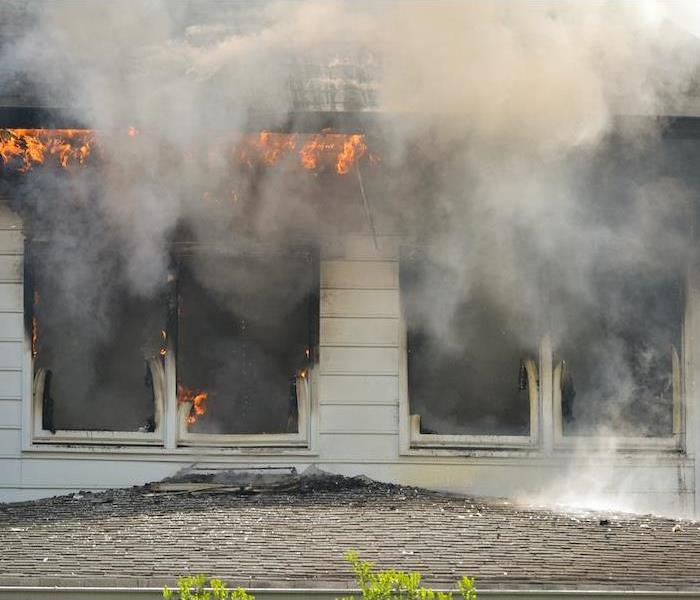 If your home has fire damage, Contact SERVPRO for restoration.
If your home has fire damage, Contact SERVPRO for restoration.
Talk to SERVPRO Restorers in Lynn to Help You Restore Your Fire Damaged Home
The secondary damage of a fire can be more severe than the damage caused by the flames that engulfed your Lynn property. If left unattended for an extended period, your valuable items may get damaged beyond repair. Professional restoration within 48 hours minimizes or prevents further damage.
When is the best time to contact the restorers?
After the firefighters extinguish the flames, do not waste time. Contact our restorers immediately to handle fire damage in your Lynn property. We respond fast to our customer's emergency calls and begin the inspection and fire cleanup process. Our highly skilled restorers always aim to get our customers' homes to their preloss state as fast as possible. SERVPRO is a leading fire restoration firm. Some of the things we do when restoring fire-damaged homes include:
- Comprehensive odor removal
- Soot and smoke cleanup
- Water damage restoration
How can you protect my home and its contents?
Our priority during fire damage restoration is to secure the building. We can board up all openings to secure your property from intruders and extreme weather. Our restorers can use plywood enforced by two-by-fours to board up any openings. We can separate the salvageable contents from those damaged beyond repair. The content restoration team can take care of your rugs, furniture, among other possessions, for maximum recovery.
How do you remove smoke and odor?
Soot and smoke residues can reach just about anywhere, including inside ductwork and walls that look unharmed. The smoke even makes its way into stereos, appliances, computers, among other electronics. If not removed on time using advanced cleaning solutions and techniques, smoke residue can corrode metal surfaces and stain porous surfaces. Our technicians can use cleaners like stain scrub to clean high gloss surfaces and stainless appliances.
Immediate odor removal is essential since odor-causing compounds penetrate surfaces deeply, making it difficult to remove them. If you attempt to handle the process yourself, you can force the compounds deeper into the surface. Our technicians can employ several procedures involving multiple professional equipment and products to eliminate odors. For instance, if there are lingering odors on carpeting and upholstery, our SERVPRO team can use a pump and injection needled to inject small amounts of deodorant into confined spots. This odor removal method is effective in situations where restorers cannot lift the carpet easily to get to the backing material or padding.
Fire damage can be devastating, primarily, if not handled on time. Contact SERVPRO of Lynn / Lynnfield, to restore your property "Like it never even happened." Talk to us today at (781) 593-6663.
How Does Soot Get Removed from Lynn Homes?
8/28/2020 (Permalink)
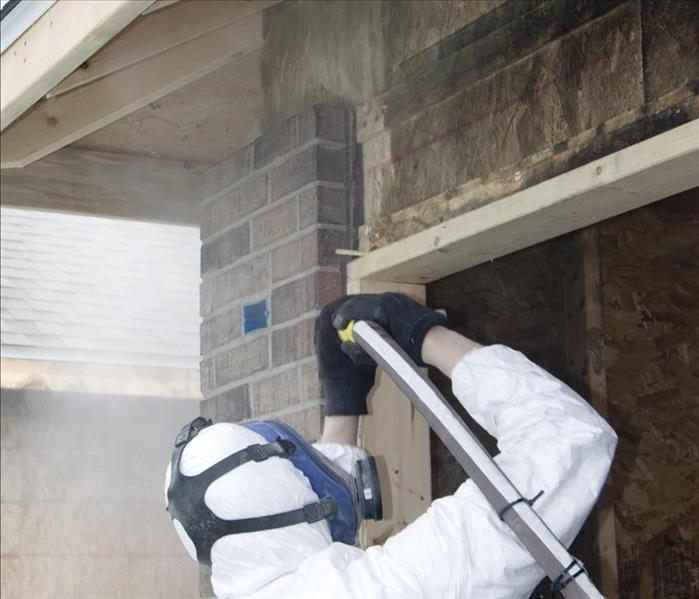 SERVPRO Provides Advanced Equipment Like this Soda Blaster to Clean Fire-Damaged Houses in Lynn
SERVPRO Provides Advanced Equipment Like this Soda Blaster to Clean Fire-Damaged Houses in Lynn
Soot residues can be threatening to structures and their contents without effective fire mitigation and cleaning.
Cleaning is a vital element of fire recovery for Lynn homes and businesses and can involve multiple actions. Smoke and soot residues can become a substantial obstacle for fire restoration companies like our SERVPRO team responding to the emergency. Our experienced professionals can work to provide efficient solutions that protect the material underneath coatings and soils.
Soot is created from incomplete combustion and can become fire damage in Lynn homes that is widespread and hazardous to those exposed. Removing residues on structural elements and contents in the damaged areas of the house often requires similar approaches. However, content recovery can occur off-site at our nearby SERVPRO warehouse under the watchful eye of our cleaning experts. Soot removal and soil cleaning can often happen by one of these three main approaches:
- Soda/Media Blasting – Media blasting utilizes a product like crushed walnuts or baking soda with pressurized water or air to eliminate heaped soils from surfaces. While this is abrasive cleaning, it often does not damage the material underneath.
- Dissolving – Specific cleaning detergents and solvents are ideal for dissolving soils and soot depending on their type and composition. Our principle to follow is like dissolves like meaning that an oily soil requires an oil-based detergent for dissolving.
- Emulsification – Cleaners and products can also be used to pull soils from the surface through a repelling property. Once separate from the material, coatings can get rinsed away.
Is Controlled Demolition Necessary?
We have professional building trade experts who can respond with our fire restoration technicians to help with repairs and eventual build-back. Structure fires often require some degree of rebuilding.
Fire losses can be devastating when work does not begin in the house immediately. Our SERVPRO of Lynn / Lynnfield team is standing by 24/7 at (781) 593-6663.
Top Causes of Kitchen Fires
1/14/2020 (Permalink)
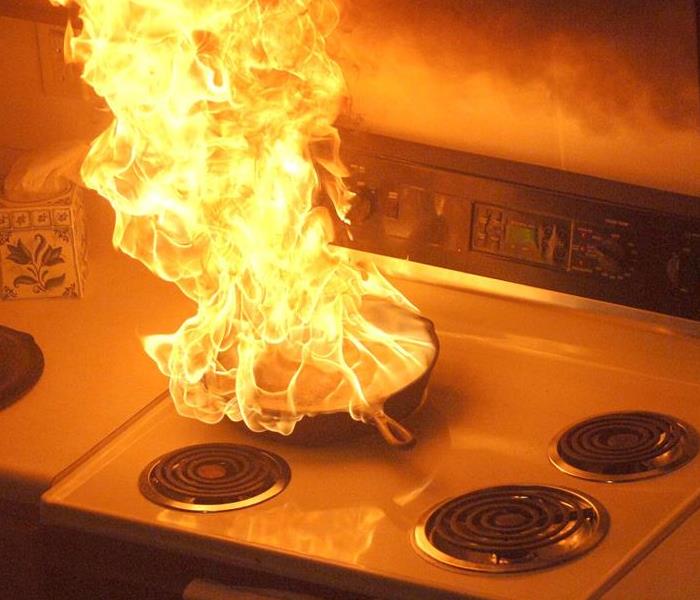 Kitchen fires are common and easily preventable
Kitchen fires are common and easily preventable
Every year there are thousands of home fires in America, some of them claim lives, and most of them cost thousands of dollars in damage and fire damage restoration bills. Fires can usually be prevented if the proper precautions are in place.
1. Unattended Cooking
Life has a way of keeping us busy, and as our lives progress, we get busier and busier. As such we are always finding ourselves being pulled in a million directions throughout our day no matter what we’re doing. Finding the time to cook a meal in the kitchen is not always so easy to come by, and while we’re doing so, it’s easy to become distracted. It may be tempting to leave your stove unattended for a few minutes while you fire back a bunch of angry tweets at some fool who disagrees with some dumb thing you believe but try to relax and stay focused on your food. The person you want to sling a bunch of angry pixels to on whatever social media platform you’re currently raging on isn’t real and can’t hurt you, the fire on your stove that you aren’t paying attention to can. It can burn your whole house down and snatch your life away if you aren’t careful.
2. Foods that Can Ignite
Certain foods are combustible when they get hot. Some examples of combustible foods are flour, oil, alcohol, sugar, garlic, and fatty meats. Since oil is so flammable, always clean leftover food and grease that is on stovetop, oven, toaster oven or counters that are near cooking surfaces. Make sure that when you are frying food, you do not put too much oil in your pots and pans. If oil does catch fire, do not under any circumstances try to put it out with water or any flour or powder based household item. Water will not help a grease fire, and flour or another powder will explode in a violent fireball. Instead, cover it with a pot lid or use flower or deploy your kitchens fire extinguisher, if you’re reading this and don’t have one stop right now and buy one, NOW! If you have got one check it and make sure it’s not expired and that it is rated safe for use in kitchen fires since not all of them are.
3. Unsafe Kitchen Attire
Avoid cooking in loose clothing like bathrobes and baggy pajamas. Clothing can catch fire if it comes too close to a fire. Tie back hair when you are working in the kitchen so that it does not catch on fire. You should be doing this anyway so you don’t find hair in your food since that is not very appealing.
4. Cluttered Counters
Keep combustible items away from cooking surfaces. Move all paper towels, dish towels, food packages, and pot holders away from cooking surfaces. If something can catch fire keep it away from open flames and heat sources.
If you have had a kitchen fire, you know you will need a fire damage restoration company to help restore your home. Fire is tremendously dangerous and must be recognized for the potentially life-threatening thing that it is. Be careful when cooking and always remember that carelessness kills thousands of people each year, if you’re not careful in the kitchen you’re asking for trouble.
If you sustain a fire damage please call SERVPRO of Lynn/Lynnfield at 781.593.6663 . We understand the intricacies of putting a home together after a damaging fire.
Fireplace Safety Tips
1/14/2020 (Permalink)
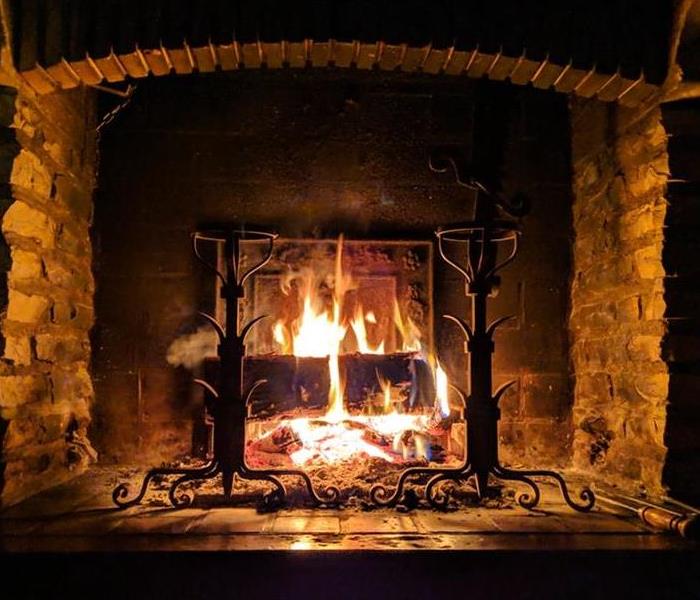 Proper care can prevent a home fire started from a fireplace
Proper care can prevent a home fire started from a fireplace
If you enjoy the occasional fire in your wood-burning fireplace, keep in mind that heating equipment is one of the leading causes of home fires during the winter months. Moreover, according to the National Fire Protection Association (NFPA), more than a third of home heating fires in the U.S. involve fireplaces and chimneys.
Follow these critical fireplace safety tips to help prevent a fire accident in your home during the cold months.
Fireplace safety tips
- Before the heating season, hire a professional chimney sweep to inspect and remove creosote or other obstructions, such as animal nests, from the chimney.
- Allow only a qualified professional to install chimney connectors and chimneys in your house.
- Inspect your chimney cap regularly. If it’s damaged, repair or replace it. If your chimney doesn’t have a cap at the top, have one installed fitted with wire-mesh sides to prevent debris or animals from entering the chimney.
- Keep any flammable objects, such as newspapers, books, and furniture, at least two feet away from the fireplace.
- Make sure there is a fire extinguisher in the room.
- Use only dry, seasoned wood cut to the correct length.
- Have a mesh metal screen or glass fireplace doors installed to prevent embers from shooting out of the fireplace.
- Use fireplace tools to maintain the fire.
- Supervise children whenever the fireplace is being used. Remind them to stay away from the fire.
- Keep pets at a safe distance from the fire, as well.
- Always supervise the fire and never leave it burning when going to sleep or leaving the home.
- Close the damper only when the embers have cooled off.
- Install and maintain smoke alarms and carbon monoxide alarms (CO) outside each sleeping area and on every level of the home. For the best protection, interconnect the CO alarms, so that when one sounds, they all do.
When starting a fire:
- Remove the ashes from the previous fire but let them cool for several hours before disposing of them. Leaving the ashes will result in more smoke, as it reduces the air supply to wood.
- Put the ashes in a metal container with a tight lid. Store it outside, at least 10 feet away from the home and other buildings.
- Open the damper; you may have to look up into the chimney with a mirror or flashlight to check that it’s open.
- Place crumpled paper on the grate and cover it with kindling or another firestarter (but do not use flammable liquids to start your fire!). Add the firewood once the kindling is burning brightly. Then, close the fire screen.
- Don’t overload the fireplace; a large fire generates more smoke and can damage your chimney.
- Never burn plastic, garbage or other toxic materials.
For professional fire damage cleaning services, contact the experts at SERVPRO of Lynn/Lynnfield!
Even with all the proper fireplace safety measures in place, accidents can still happen. As smoke can severely damage a home, it’s essential to get the house remediated as soon as possible. Our fire damage restoration technicians use the latest equipment and techniques to remove soot and deodorize your house after fire damage quickly and properly. For professional fire damage cleaning services in Lynn, Lynnfield or Nahant, contact the SERVPRO of Lynn/Lynnfield office at 781.593.6663.
Three Types of Smoke Damage
11/19/2019 (Permalink)
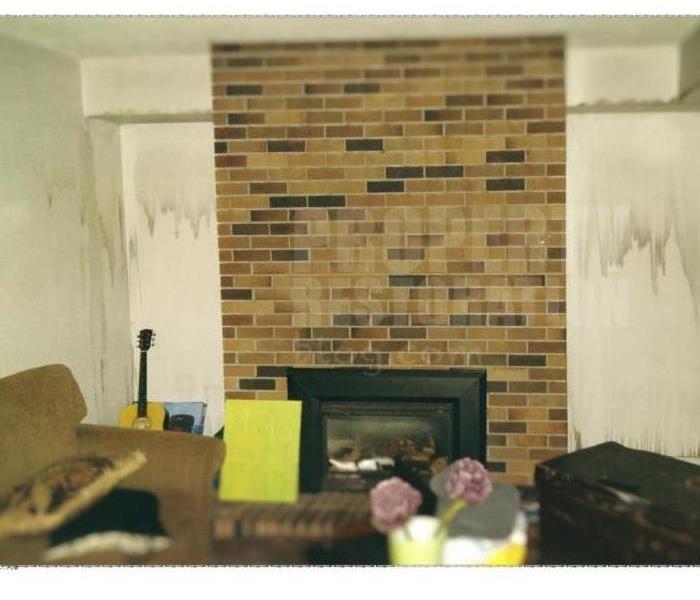 Properly identifying what kind of smoke damage you have sustained can help you avoid costly mistakes.
Properly identifying what kind of smoke damage you have sustained can help you avoid costly mistakes.
There are 3 main types of smoke and residues that can be left behind by fire damage in your home:
- Synthetic: These synthetic residues appear when oil based materials are burned such as plastics and fabrics. This could include everything from window coverings, furniture, carpets, and electronics. When synthetic materials burn they will produce a thick black smoke, leaving behind a smeary residue that can create quite the mess if not cleaned up properly. In these situations avoid touching any of the residue to prevent smearing as vacuuming is the best approach to cleaning the residues left behind, followed by dry sponge cleaning.
- Protein: Fires caused by the burning of proteins such as meats and beans for example will leave behind a yellowish brown residue. The texture of which is greasy feeling and can stick to any surface, making it a pain to clean up. Make sure you head over to your local Home-Depot type shop and ask for the proper fire cleaning chemical that will work well on cleaning up after protein fires.
- Natural: These type of fires are caused by the burning of natural products such as wood and paper. They produce dry powdery residue that is greyish-black in colour. These residues are easier to clean up than the synthetic or protein residues. Removing the residues can be done by vacuuming with a bristled brush, followed by dry-chem sponge cleaning.
Now that you are able to identify the different sources of fire smoke and residues you can determine which type you are dealing with in your particular case and apply the appropriate cleaning methods as discussed. Please remember though that improper cleaning of smoke damage can make matters much worse...and more expensive!
When in doubt give the professionals at SERVPRO of Lynn/Lynnfield a call at 781.593.6663
7 Things NOT To Do After a Fire Loss
10/22/2019 (Permalink)
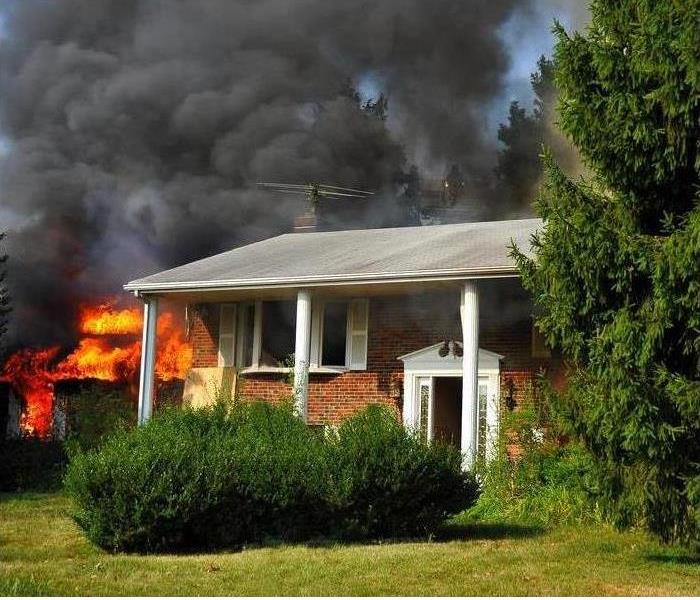 Be careful not to create more damage after your fire loss
Be careful not to create more damage after your fire loss
A fire and the damage it causes can be nightmarish. In just a few moments, an entire room can be destroyed, and a fire restoration services team will need to be called in. Hopefully you’ll never have to face such a scenario, but if you do, there are some things that you should never do following a fire.
Don’t Try To Clean Up Yourself
Vacuuming, wiping down the walls, touching the drapes, and any other attempt at cleaning the place up yourself can put you at risk of inhaling the extremely dangerous chemicals that are in soot and ash. Besides this, you could cause further damage to your property. Ash and soot require specialized, professional cleaning from a fire restoration services team.
Don’t Walk Around On Uncovered Carpets
Put clean sheets or towels over your carpet before you walk around on it. Otherwise you may get ash and soot setting into your shoes, and this is bad for your health.
Don’t Turn Appliances On
This goes especially for fires that took place in the kitchen. Don’t turn any electrical appliances on that were inside the room during the fire. They’ll need to be checked and cleaned professionally before being turned on again. If you turn them on when ash or other debris may be trapped inside of them, you could ruin them. Also, do not turn on ceiling appliances such as a light fixture or fan if the ceiling is wet. The wiring could be damp and could cause electric shock.
Don’t Deodorize
If you use the wrong type of deodorizer, such as a store-bought or a commercial deodorizer, you might offset the better formulas that the fire restoration services cleaning team will use that break up smoke molecules and improve odors.
Don’t Try To Clean Your Carpet
If you attempt to remove ash, soot, or water from your carpet or shampoo it, you’re again putting yourself at risk of inhaling very dangerous chemicals from that ash and soot. And in most cases, your carpet will need to be replaced anyway.
Don’t Turn On Your HVAC System
Keep your cooling or heating system turned off until your home is cleaned. By turning on the HVAC system, you’re inviting smoke to travel through your ductwork, which can cause secondary damage to your home.
Don’t Try To Keep Furniture
If there was heavy smoke during the fire, don’t try to continue using your upholstered furniture or carpet. If you keep using them, you’re putting yourself at risk of respiratory health problems. Your upholstered furniture and carpet will need to be replaced. In fact, you shouldn’t even sit or lie down on upholstered furniture that has been in a fire, even for a few minutes.
Knowing what not to do after a fire can make a bad situation a little easier, and can help prevent further damage.
At SERVPRO of Lynn/Lynnfield, we’ve seen our share of fire and smoke damage, and we’ve also seen it made worse when homeowners attempt to clean up themselves. Trust us—don’t try it! Just give SERVPRO of Lynn/Lynnfield a call at 781.593.6663 and we'll come take care of it!
Tips for Dealing With Fire or Smoke Damage
7/31/2019 (Permalink)
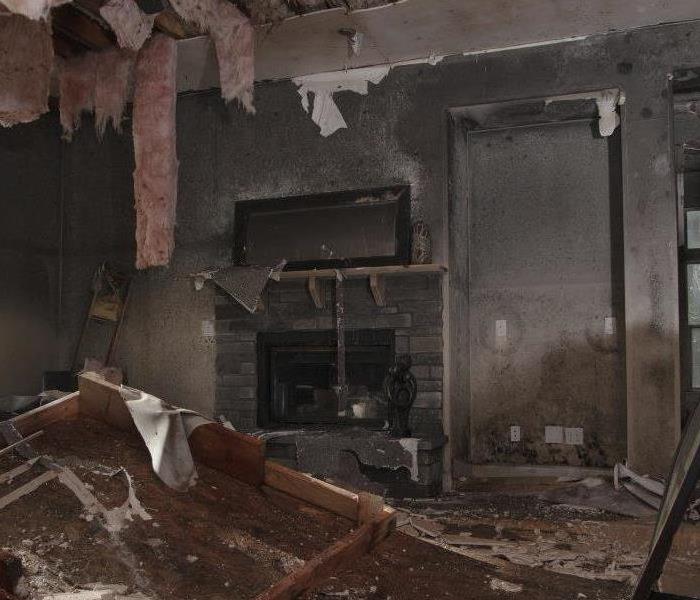 Dealing with fire damage can be frustrating experience
Dealing with fire damage can be frustrating experience
When disaster strikes, severe fire damage can be the most devastating thing to happen to any property. As fire becomes an increasingly prevalent threat, insurance companies are constantly trying to cut corners on fire insurance claims in an attempt to save money. After a fire, you've most likely lost some personal belongings and areas of your home are completely destroyed. The last thing you need is a homeowners' insurance company giving you a hard time regarding your claim.
First Things First, Check Your Policy
Even if you have replacement coverage for your home you actually may only have "actual cash value" for the personal items that were lost. When you call your insurance company, your agent should notify you about this and suggest buying an endorsement so that your belongings will be covered under a replacement policy.
Secure Your Property
The majority of homeowners coverage policy requires you to take reasonable steps to minimize more harm on your property. In short terms, this is known as your duty to mitigate damages. These steps are fairly small and easy to do, such as covering leaking areas with plastic wrap or turning off the water if you discover a huge pipe burst. Your insurance company will most likely pay these costs when you make your claim.
File Your Claim Immediately
Every homeowner policy will require you to report your loss as soon as possible. You will need to make a call to your agent and submit a "proof of loss claim" in which you will itemize your losses in detail and list the value of each. The longer you wait, the further you fall down the list when it comes time for the company to send an adjuster to deal with your claim.
Always Keep Track Of Your Living Expenses
Every homeowners policy will include a loss of use clause, which entitles you to adequate reimbursement for living expenses while you're out of your home. Keep in mind, these expenses only include additional living expenses, meaning the difference between what it costs you to live on a daily basis and what it is costing you now. For example, if you ate the majority of your meals at home and your groceries cost you $400 a week and now, after a fire, you're eating out and spending $500 a week, you can claim only that additional $100.
Repairing fire damage is a lengthy process, and dealing with your insurance could be a difficult process if you are not knowledgeable about the subject. If you've experienced a small isolated fire or a complete burn down, you need a property restoration company to properly assess the damage. At SERVPRO of Lynn/Lynnfield, our 24-hour operators are ready to take your call and dispatch a team of highly experienced fire and smoke restoration professionals to your property. Call us today at 781-593-6663!
Three Types of Fire Residue
7/31/2019 (Permalink)
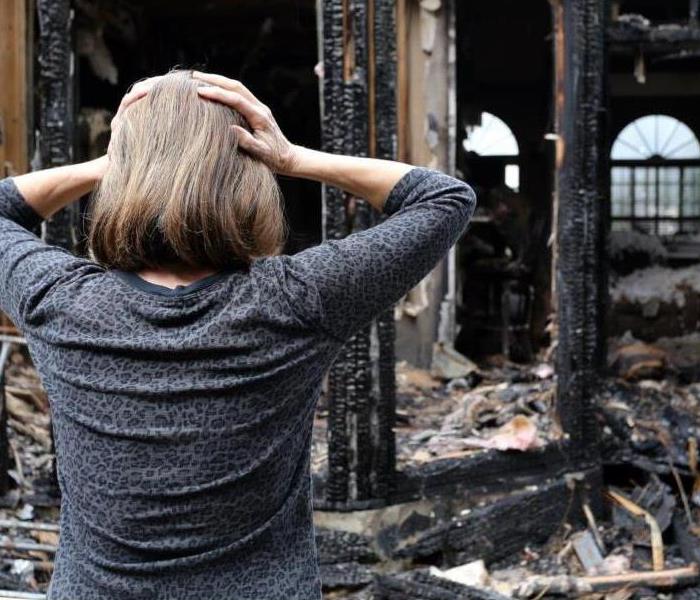 Fire can leave different residues that should be professionally cleaned
Fire can leave different residues that should be professionally cleaned
Looking for some more information on the smoke and residue damage that has occurred in your home?
Well there are 3 main types of smoke and residues that can be left behind by fire damage in your home:
Synthetic: These synthetic residues appear when oil based materials are burned such as plastics and fabrics. This could include everything from window coverings, furniture, carpets, and electronics. When synthetic materials burn they will produce a thick black smoke, leaving behind a smeary residue that can create quite the mess if not cleaned up properly. In these situations avoid touching any of the residue to prevent smearing as vacuuming is the best approach to cleaning the residues left behind, followed by dry-chem sponge cleaning.
Protein: Fires caused by the burning of proteins such as meats and beans for example will leave behind a yellowish brown residue. The texture of which is greasy feeling and can stick to any surface, making it a pain to clean up. Make sure you head over to your local Home-Depot type shop and ask for the proper fire cleaning chemical that will work well on cleaning up after protein fires.
Natural: These type of fires are caused by the burning of natural products such as wood and paper. They produce dry powdery residue that is greyish-black in colour. These residues are easier to clean up than the synthetic or protein residues. Removing the residues can be done by vacuuming with a bristled brush, followed by dry-chem sponge cleaning.
Now that you are able to identify the different sources of fire smoke and residues you can determine which type you are dealing with in your particular case.
Call the fire damage experts at SERVPRO of Lynn/Lynnfield at 781-593-6663.
Thanksgiving Fire Safety- Everything You Need to Know
11/12/2018 (Permalink)
For most, the kitchen is the heart of the home, especially during the holidays. From testing family recipes to decorating cakes and cookies, everyone enjoys being part of the preparations.
So keeping fire safety top of mind in the kitchen during this joyous but hectic time is important, especially when there’s a lot of activity and people at home. As you start preparing your holiday schedule and organizing that large family feast, remember, by following a few simple safety tips you can enjoy time with your loved ones and keep yourself and your family safer from fire.
Thanksgiving by the numbers
- Thanksgiving is the peak day for home cooking fires, followed by the day before Thanksgiving and Christmas Day. and Christmas Eve.
- In 2015, U.S. fire departments responded to an estimated 1,760 home cooking fires on Thanksgiving, the peak day for such fires.
- Unattended cooking was by far the leading contributing factor in cooking fires and fire deaths.
- Cooking equipment was involved in almost half of all reported home fires and home fire injuries, and it is the second leading cause of home fire deaths.
Safety tips
- Stay in the kitchen when you are cooking on the stovetop so you can keep an eye on the food.
- Stay in the home when cooking your turkey and check on it frequently.
- Keep children away from the stove. The stove will be hot and kids should stay 3 feet away.
- Make sure kids stay away from hot food and liquids. The steam or splash from vegetables, gravy or coffee could cause serious burns.
- Keep the floor clear so you don’t trip over kids, toys, pocketbooks or bags.
- Keep knives out of the reach of children.
- Be sure electric cords from an electric knife, coffee maker, plate warmer or mixer are not dangling off the counter within easy reach of a child.
- Keep matches and utility lighters out of the reach of children — up high in a locked cabinet.
- Never leave children alone in room with a lit candle.
- Make sure your smoke alarms are working. Test them by pushing the test button.
https://www.nfpa.org/Public-Education/By-topic/Seasonal-fires/Thanksgiving-safety
October Is National Fire Prevention Month
10/12/2018 (Permalink)
Home Safety Checklist
Smoke Alarms
There is one smoke alarm on every level of the home and inside and outside each sleeping area.
Smoke alarms are tested and cleaned monthly.
Smoke alarm batteries are changed as needed.
Smoke alarms are less than 10 years old.
Cooking Safety
Cooking area is free from items that can catch fire.
Kitchen stove hood is clean and vented to the outside.
Pots are not left unattended on the stove.
Electrical & Appliance Safety
Electrical cords do not run under rugs.
Electrical cords are not frayed or cracked.
Circuit-protected, multi-prong adapters are used for additional outlets.
Large and small appliances are plugged directly into wall outlets.
Clothes dryer lint filter and venting system are clean.
Candle Safety
Candles are in sturdy fire-proof containers that won’t be tipped over.
All candles are extinguished before going to bed or leaving the room.
Children and pets are never left unattended with candles.
Carbon Monoxide Alarms
Carbon monoxide alarms are located on each level of the home.
Carbon monoxide alarms are less than 7 years old.
Smoking Safety
Family members who smoke only buy fire-safe cigarettes and smoke outside.
Matches and lighters are secured out of children’s sight.
Ashtrays are large, deep and kept away from items that can catch fire.
Ashtrays are emptied into a container that will not burn.
Heating Safety
Chimney and furnace are cleaned and inspected yearly.
Furniture and other items that can catch fire are at least 3 feet from fireplaces, wall heaters, baseboards, and space heaters.
Fireplace and barbecue ashes are placed outdoors in a covered metal container at least 3 feet from anything that can catch fire.
Extension cords are never used with space heaters.
Heaters are approved by a national testing laboratory and have tip-over shut-off function.
Home Escape Plan
Have two ways out of each room.
Know to crawl low to the floor when escaping to avoid toxic smoke.
Know that once you’re out, stay out.
Know where to meet after the escape.
Meeting place should be near the front of your home, so firefighters know you are out.
Practice your fire escape plan.
Grease Fire Safety Tips
6/15/2018 (Permalink)
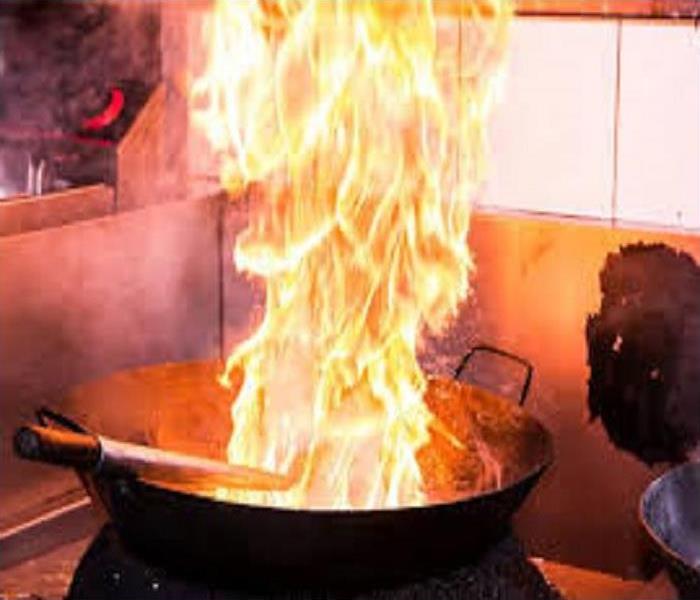 Do NOT pour water on the fire!!!
Do NOT pour water on the fire!!!
The best way to avoid a grease fire is to not have one. While you are cooking, keep an eye on the oil as it’s heating. The oil won’t immediately catch fire once it starts smoking, but smoke is a danger sign that it’s well on its way to getting there.
If the worst happens and your oil does catch on fire, use the following tips:
- If the fire is still small enough and contained in one pot, it is safe to put it out yourself. If it is already spreading to other parts of the kitchen, evacuate.
- Turn off the source of the heat on the stove. Do not try to move the pot because you don’t want to accidentally spill or splash the burning oil.
- Do NOT pour water on the fire! Since oil and water do not mix, pouring water can cause the oil to splash and spread the fire even worse. In fact, the vaporizing water can also carry grease particles in it, which can also spread the fire.
- Remove all oxygen from the flame. You can cover with another pot or pan. Do not cover it with a glass lid because the glass lid may shatter.
- If you can’t cover it, dump lots of baking soda on it.
- Use a chemical fire extinguisher on the grease fire. There are different kinds of extinguishers. Not all can be used on a grease fire, but the ABC dry chemical extinguisher is best.
Hopefully you’ll never be in a situation where you have to actually use this advice, but if you are remember to smother the fire with a pot or baking soda and never use water!
Call us at SERVPRO of Lynn/Lynnfield for fire, smoke or soot damage.
781-593-6663
http://safety.smart911.com/what's-best-way-safely-put-grease-fire/
10 Tips for Safe Summer Barbecues!
6/15/2018 (Permalink)
Every year, 7,000 Americans are injured while using backyard barbecue grills. It's usually a case of good products used incorrectly.
Here are the top 10 most common mistakes and key safety tips.
Do:
- Keep your grill at least 10 feet away from your house.Farther is even better. This includes portions attached to your house like carports, garages and porches. Grills should not be used underneath wooden overhangs either, as the fire could flare up into the structure above. This applies to both charcoal and gas grills.
- Clean your grill regularly.If you allow grease and fat to build up on your grill, they provide more fuel for a fire. Grease is a major source of flare ups.
- Check for gas leaks.You can make sure no gas is leaking from your gas grill by making a solution of half liquid dish soap and half water and rubbing it on the hoses and connections. Then, turn the gas on (with the grill lid open.) If the soap forms large bubbles, that's a sign that the hoses have tiny holes or that the connections are not tight enough.
- Keep decorations away from your grill. Decorations like hanging baskets, pillows and umbrellas look pretty AND provide fuel for a fire. To make matters worse, today's decor is mostly made of artificial fibers that burn fast and hot, making this tip even more important.
- Keep a spray bottle of water handy.That way, if you have a minor flare-up you can spray it with the water to instantly calm it. The bonus of this tip is that water won't harm your food, so dinner won't be ruined!
- Keep a fire extinguisher within a couple steps of your grill.And KNOW HOW TO USE IT. If you are unsure how to use the extinguisher, don't waste time fiddling with it before calling 911. Firefighters say many fire deaths occur when people try to fight a fire themselves instead of calling for expert help and letting the fire department do its job.
Don't:
- Turn on the gas while your grill lid is closed. NEVER do this. It causes gas to build up inside your grill, and when you do light it and open it, a fireball can explode in your face.
- Leave a grill unattended.Fires double in size every minute. Plan ahead so that all of your other food prep chores are done and you can focus on grilling.
- Overload your grill with food.This applies especially fatty meats. The basic reason for this tip is that if too much fat drips on the flames at once, it can cause a large flare-up that could light nearby things on fire.
- Use a grill indoors. People often think it will be safe to use a grill, especially a small one, indoors. NOT TRUE. In addition to the fire hazard, grills release carbon monoxide,the deadly colorless, odorless gas. That gas needs to vent in fresh air or it can kill you, your family and pets.
https://abcnews.go.com/Business/ten-tips-safe-summer-barbecues-learn-dos-donts/story?id=13918382
What Happens to My Belongings in a Fire?
6/6/2018 (Permalink)
Fire damage, including smoke and soot, affects not only the structure of your house but also your belongings. SERVPRO of Lynn/Lynnfield understands your family’s furniture, clothing, keepsakes, and other belongings make your house more than a structure; they make it home.
If You Have Questions or Need Help, Call Us Today 791-593-6333
Contents Restoration
SERVPRO of Lynn/Lynnfield specializes in restoring contents damaged by water, fire, or mold. Our expertise and “restore” versus “replace” mentality can help you save money while preserving precious keepsakes that can’t be replaced. We pretest your belongings to determine what items we can restore to pre-fire condition. We use several methods of cleaning your contents, including:
- Dry Cleaning - Used for cleaning light residues or to pre-clean prior to wet cleaning.
- Wet Cleaning - An effective cleaning method for removing moderate to heavy residues.
- Spray and Wipe -Effective for items that can’t withstand wet cleaning.
- Foam Cleaning - Used for upholstery fabrics that might shrink or bleed if wet cleaned.
- Abrasive Cleaning - Involves agitation of the surface being cleaned.
- Immersion Cleaning - Contents are dipped into a bath of the cleaning product.
Move-Outs/Pack-Outs
If your home requires extensive restoration or cleaning due to fire damage, SERVPRO of Lynn/Lynnfield can conduct an organized, efficient move-out of the affected area. Move-out will provide several benefits, including:
- A quicker remodeling process
- Protecting items from potential damage
- Protecting contents from further on-site damage
When restoration is completed, we will work with you to coordinate the move-in according to your needs. The services offered upon move-in may depend on your insurance coverage.
Electronic Cleanup
Fire-damaged electronics can present a serious hazard. Do not attempt to turn on or operate any electrical device that you suspect has been damaged by fire. Smoke residues can contain acids that corrode metal surfaces. If the residues are not removed, corrosion causes electronic failure in the device. We will coordinate the restoration of your electronics, including:
- Television sets
- DVD players
- Computers
- And more
The key to restoring electronics is taking prompt action to prevent further damage. Electronics will be cleaned and inspected by a qualified electronics technician.
Document / Photograph Drying
When your valuable documents, including photographs, are damaged by water or fire, extreme caution should be taken to help ensure the fire damage does not destroy the document. Although some documents may not be restored to pre-fire damage condition, SERVPRO of Malden / Melrose can save a great deal and help minimize additional damage.
Depending on the type of documents and the level of fire, smoke, or soot damage, they have five options for the restoration of documents:
- Air Drying
- Dehumidification
- Freezer Drying
- Vacuum Freeze Drying
- Vacuum Thermal Drying
Contents Claim Inventory Service
When a fire emergency strikes, the damage can often feel overwhelming. We can help ease the worry and confusion during the recovery process by offering our Contents Claim Inventory Service (CCIS), which provides a detailed and accurate list of your belongings. We take a room-by-room inventory of your contents, including digital photos, and in some instances, bar coding.
Our Contents Claim Inventory Service:
- Preloss list and value of contents
- Detailed and accurate report
- Better information to settle claims quicker
- Assistance with burden of proof for claims
Peace of mind when you need it most!
My Smoke Alarm Works - Why Would I Change It?
1/25/2018 (Permalink)
We all know to change the batteries in our smoke alarms twice yearly but did you know the National Fire Protection Association (NFPA) recommends that you replace all smoke alarms when they are 10 years old?
I know what you’re thinking, “how I am supposed to remember how old they are?” Check the back of the smoke alarm and you will find the manufacturer date.
Even if your smoke alarms aren’t ten years old you may also consider replacing them early to keep up with the latest technology.
There are two kinds of smoke alarms:
Ionization smoke alarms are generally more responsive to flaming fires.
How they work: Ionization-type smoke alarms have a small amount of radioactive material between two electrically charged plates, which ionizes the air and causes current to flow between the plates. When smoke enters the chamber, it disrupts the flow of ions, thus reducing the flow of current and activating the alarm
Photoelectric smoke alarms are generally more responsive to fires that begin with a long period of smoldering (called “smoldering fires”).
How they work: Photoelectric-type alarms aim a light source into a sensing chamber at an angle away from the sensor. Smoke enters the chamber, reflecting light onto the light sensor; triggering the alarm.
The NFPA recommends smoke alarms that use both of these technologies.
Check out the NFPA website for lots of great information on smoke alarms.
https://www.nfpa.org/Public-Education/By-topic/Smoke-alarms
Fire-Safety Tips to Keep in Mind This Thanksgiving
11/2/2017 (Permalink)
The kitchen is where the holiday meal magic happens, but it can also be a danger zone, especially on Thanksgiving.
Thanksgiving is typically the most dangerous day of the year. Everybody's cooking in the kitchen and it's one of the few days where almost everyone is preparing a meal. "The house is more congested than normal so you have to control the flow in your kitchen to make sure there's no accidents.
More fires start in the kitchen than anywhere else in the home. On Thanksgiving, in particular, there are three times as many house fires than any other day of the year, according to the US Consumer Product Safety Commission
Below are some safety tips for the holiday:
- Don't wear loose-fitting clothing around open flames.
- Don't leave your food unattended on the stove or in the oven.
Make sure a person is always in the kitchen watching the food that's cooking.
You should have a zone, around anything around the stove, within like a 3-feet range for children.
- If deep-frying turkey, do it outside.
- Never put water on a grease fire.
- Store fire extinguishers in plain sight and near an exit - not under the sink. According to the National Fire Protection Association. Because fires can double every five to 10 seconds - and can consume a room in just one minute - call 911 first.
Smoke Detector - Ionization vs Photoelectric
10/25/2017 (Permalink)
The two most commonly recognized smoke detection technologies are ionization smoke detection and photoelectric smoke detection.
Ionization smoke alarms are generally more responsive to flaming fires.
How they work: Ionization-type smoke alarms have a small amount of radioactive material between two electrically charged plates, which ionizes the air and causes current to flow between the plates. When smoke enters the chamber, it disrupts the flow of ions, thus reducing the flow of current and activating the alarm.
Photoelectric smoke alarms are generally more responsive to fires that begin with a long period of smoldering (called “smoldering fires”).
How they work: Photoelectric-type alarms aim a light source into a sensing chamber at an angle away from the sensor. Smoke enters the chamber, reflecting light onto the light sensor; triggering the alarm.
For each type of smoke alarm, the advantage it provides may be critical to life safety in some fire situations. Home fatal fires, day or night, include a large number of smoldering fires and a large number of flaming fires. You can not predict the type of fire you may have in your home or when it will occur. Any smoke alarm technology, to be acceptable, must perform acceptably for both types of fires in order to provide early warning of fire at all times of the day or night and whether you are asleep or awake.
For best protection, use both types of smoke alarm technologies
For best protection, it is recommended both (ionization and photoelectric) technologies be used in homes. In addition to individual ionization and photoelectric alarms, combination alarms that include both technologies in a single device are available.
Kitchen Fire in Lynn, MA
8/9/2016 (Permalink)
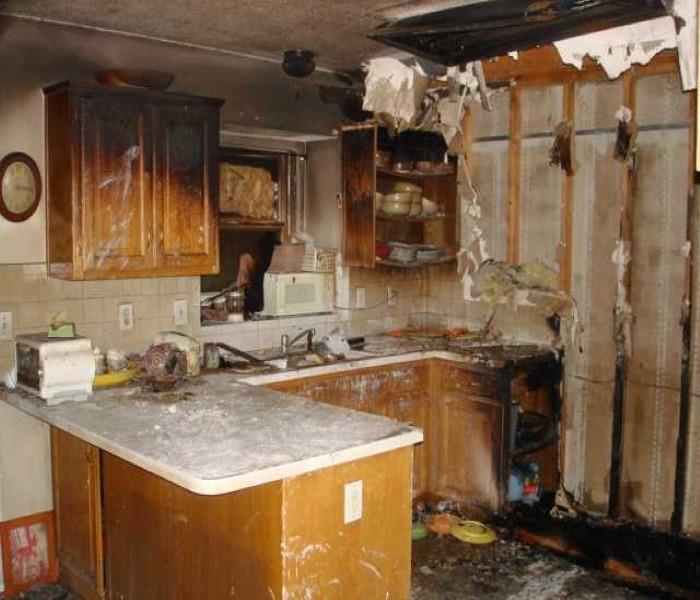 Oven Fire in Lynn, MA
Oven Fire in Lynn, MA
Title: Lynn/Lynnfield Smoke and Soot Cleanup
Category: Fire Damage
Photo Caption: Smoke and Soot Damage Can Cause a Pervasive Odor in Your Home.
Body:
Smoke and soot is very invasive and can penetrate various cavities within your home, causing hidden damage and odor. Our smoke damage expertise and experience allows us to inspect and accurately assess the extent of the damage to develop a comprehensive plan of action.
Smoke and soot facts:
- Hot smoke migrates to cooler areas and upper levels of a structure.
- Smoke flows around plumbing systems, seeping through the holes used by pipes to go from floor to floor.
- The type of smoke may greatly affect the restoration process.
Different Types of Smoke
There are two different types of smoke–wet and dry. As a result, there are different types of soot residue after a fire. Before restoration begins, SERVPRO of Lynn/Lynnfield will test the soot to determine which type of smoke damage occurred. The cleaning procedures will then be based on the information identified during pretesting. Here is some additional information:
Wet Smoke – Plastic and Rubber
- Low heat, smoldering, pungent odor, sticky, smeary. Smoke webs are more difficult to clean.
Dry Smoke – Paper and Wood
- Fast burning, high temperatures, heat rises therefore smoke rises.
Protein Fire Residue – Produced by evaporation of material rather than from a fire
- Virtually invisible, discolors paints and varnishes, extreme pungent odor.
Our Fire Damage Restoration Services
Since each smoke and fire damage situation is a little different, each one requires a unique solution tailored for the specific conditions. We have the equipment, expertise, and experience to restore your fire and smoke damage. We will also treat your family with empathy and respect and your property with care.
Have Questions about Fire, Smoke, or Soot Damage?
Call Us Today – 781-593-6663
 SERVPRO is experienced in working with insurance companies and can help you navigate the claims process.
SERVPRO is experienced in working with insurance companies and can help you navigate the claims process.





 24/7 Emergency Service
24/7 Emergency Service

























